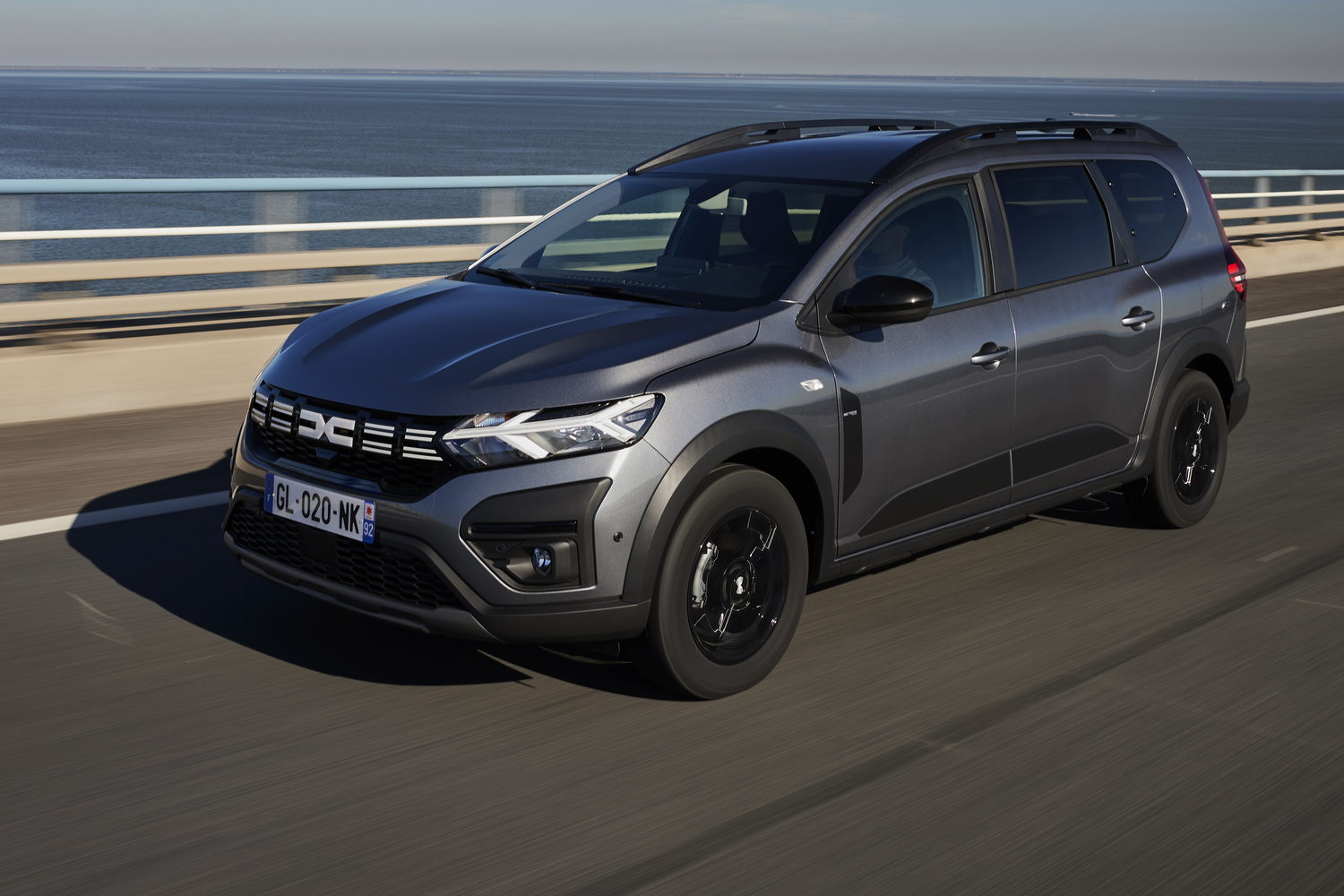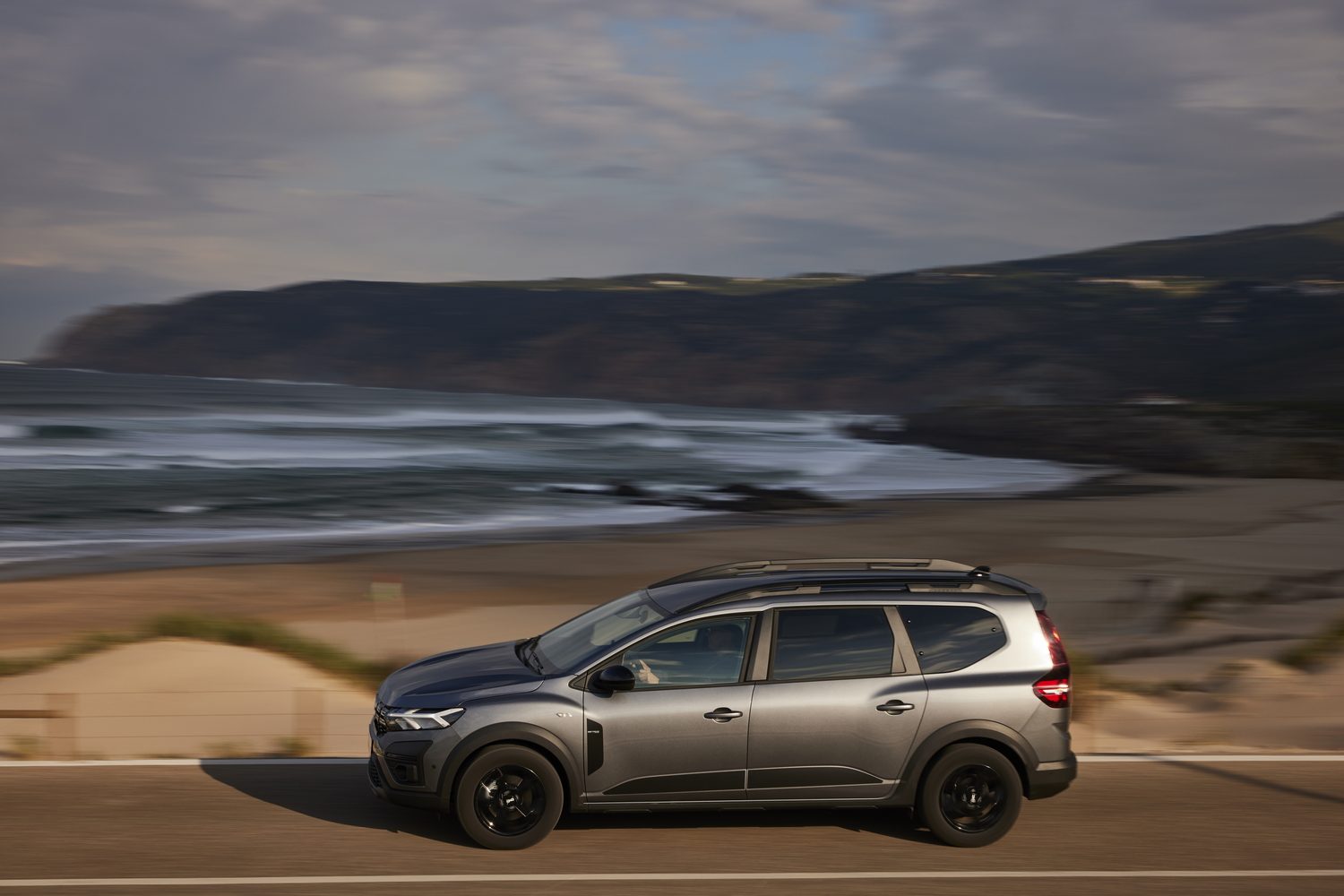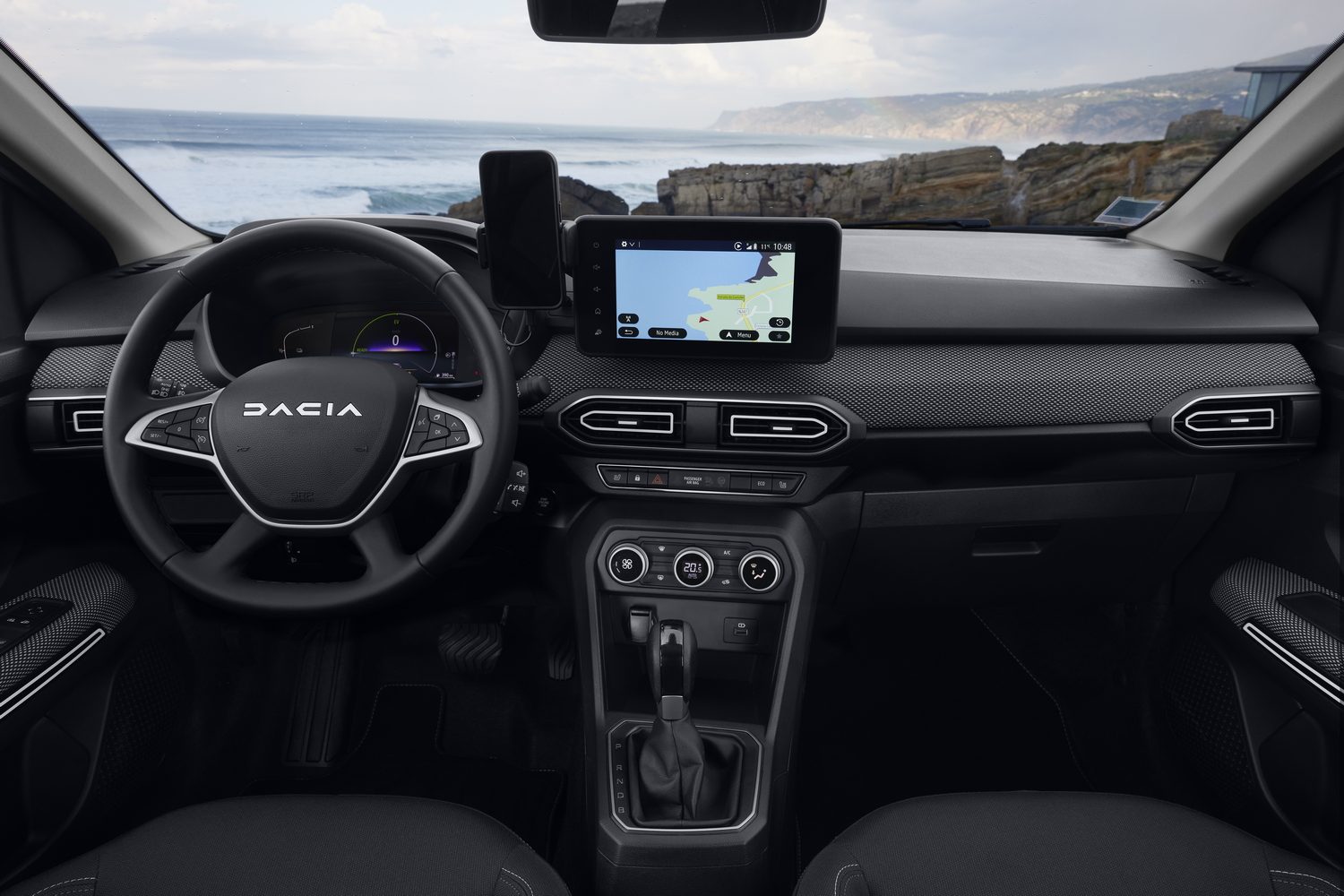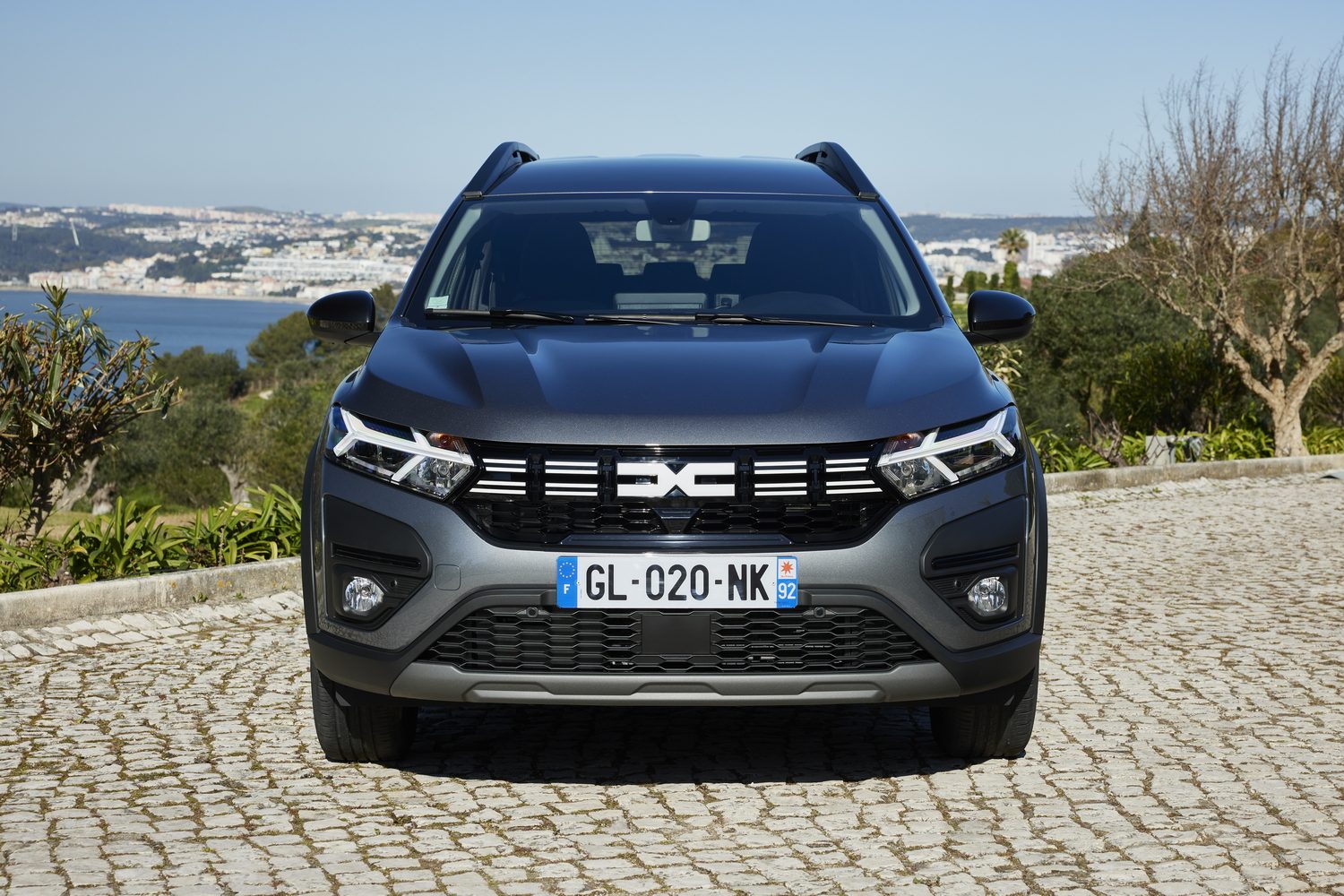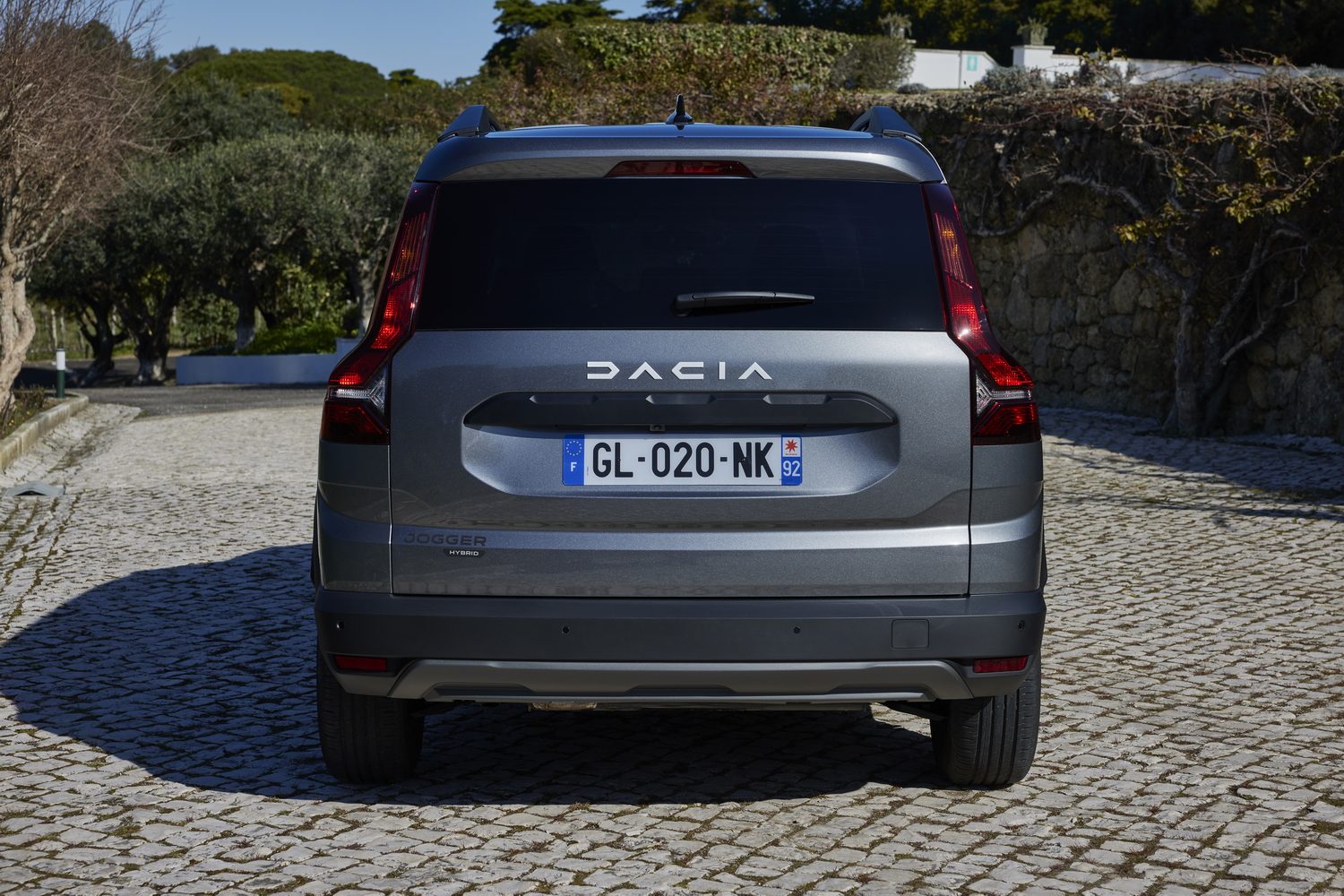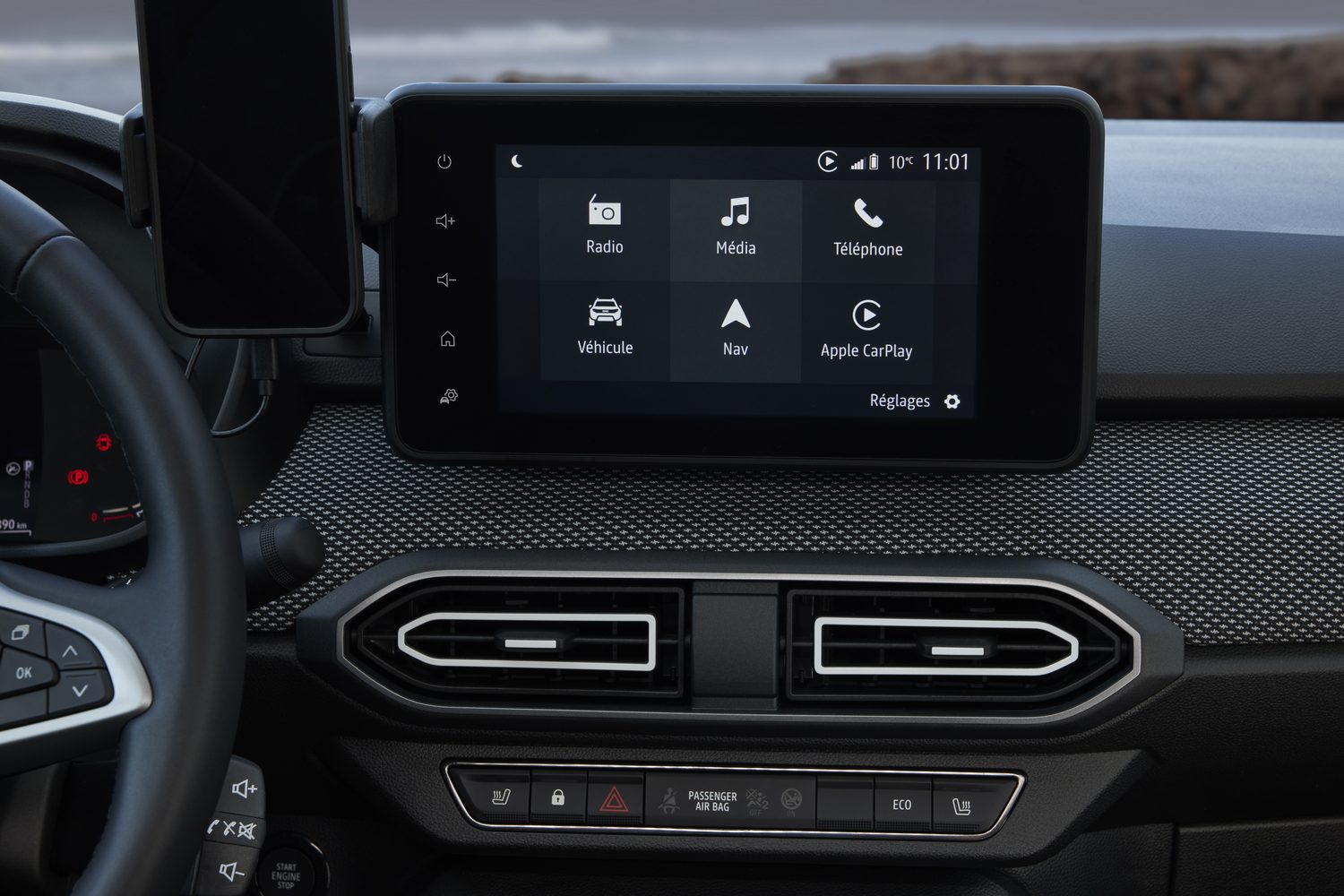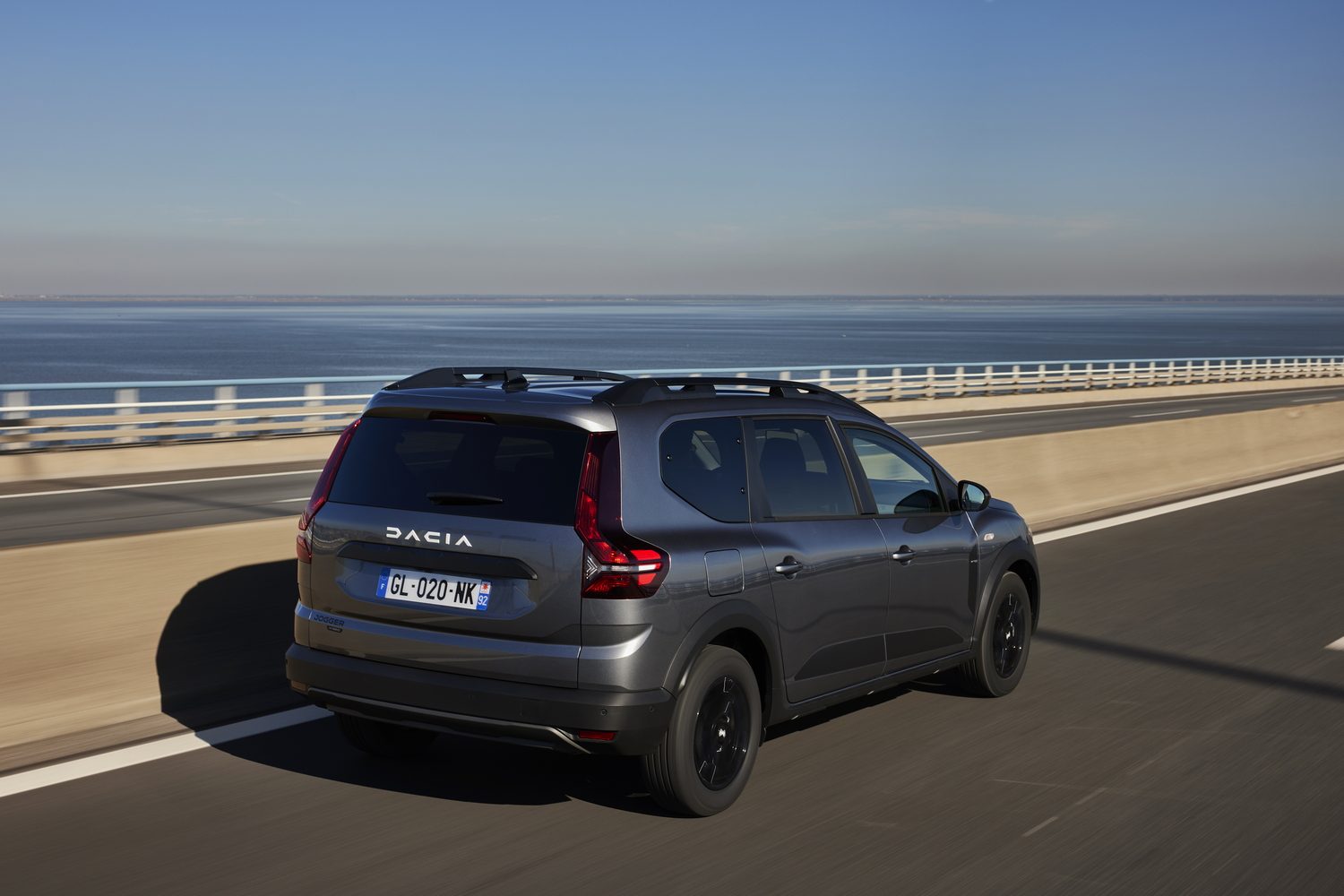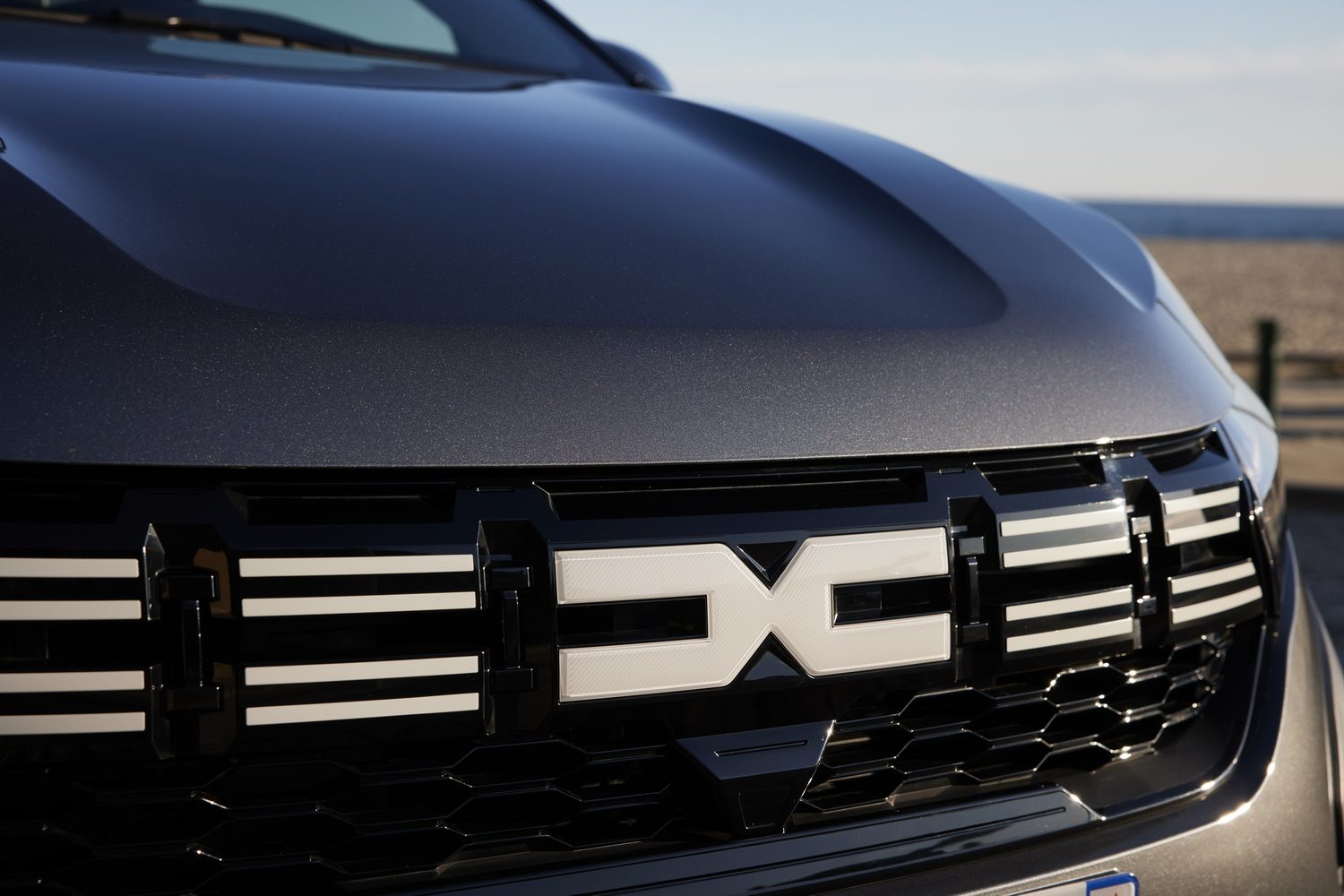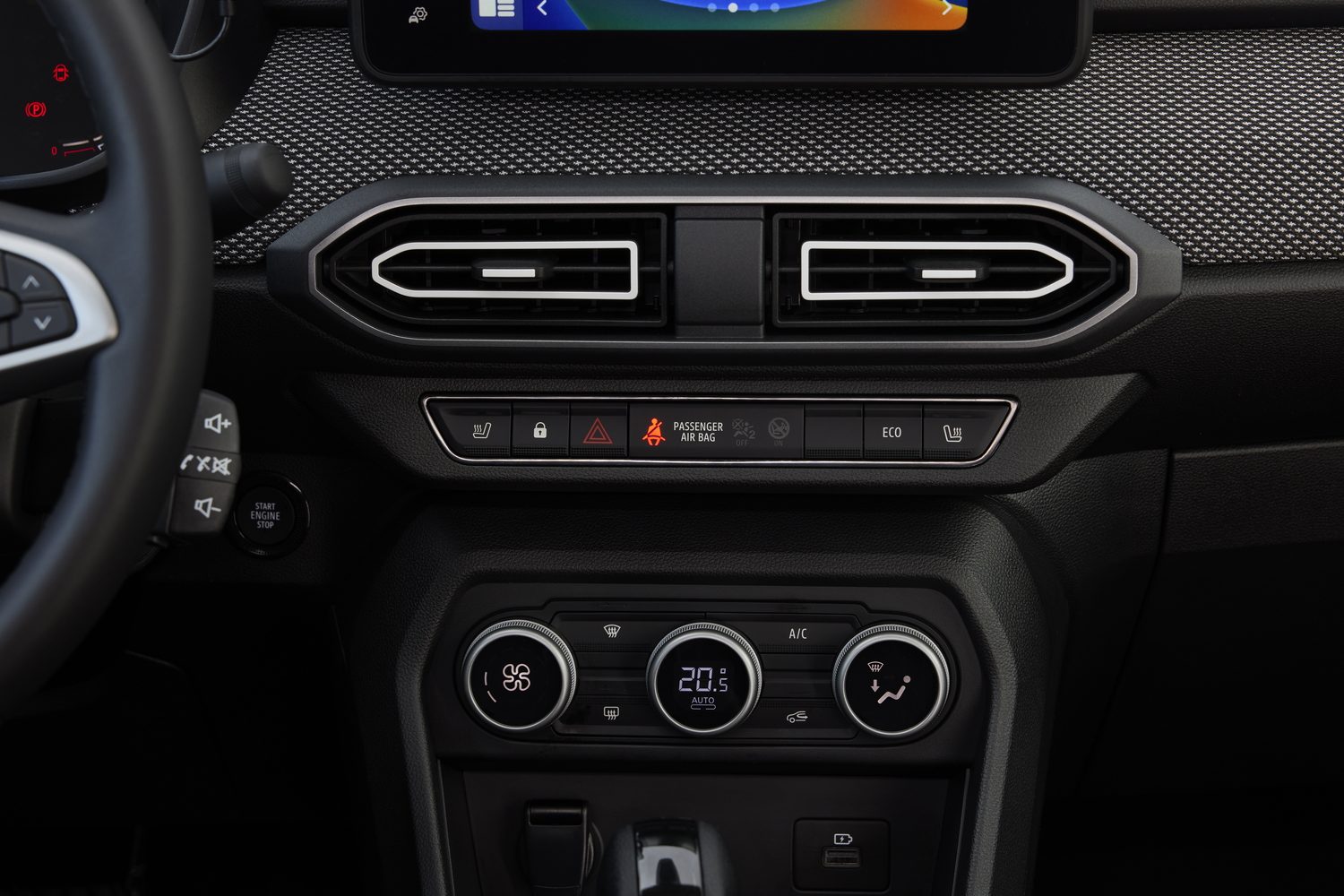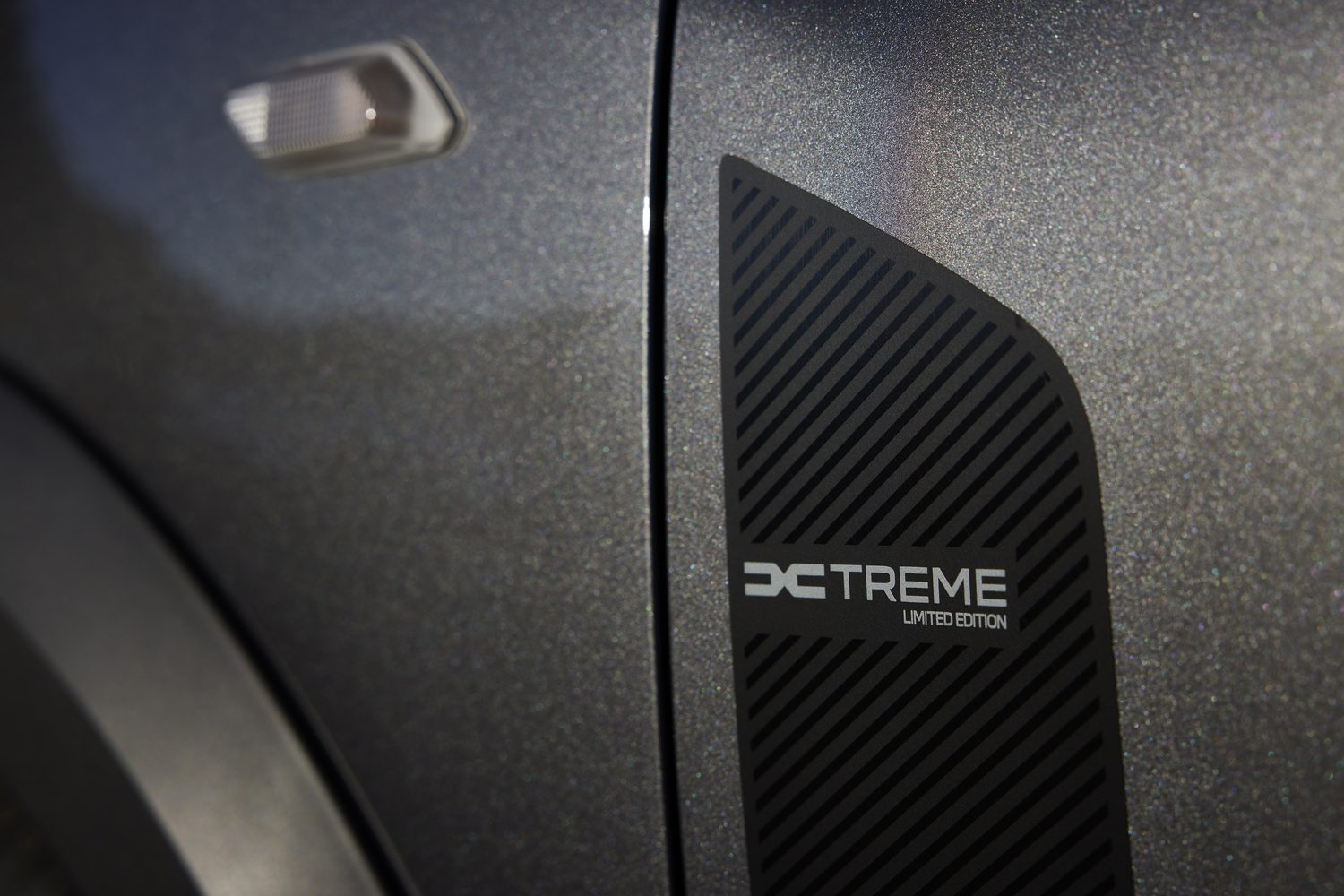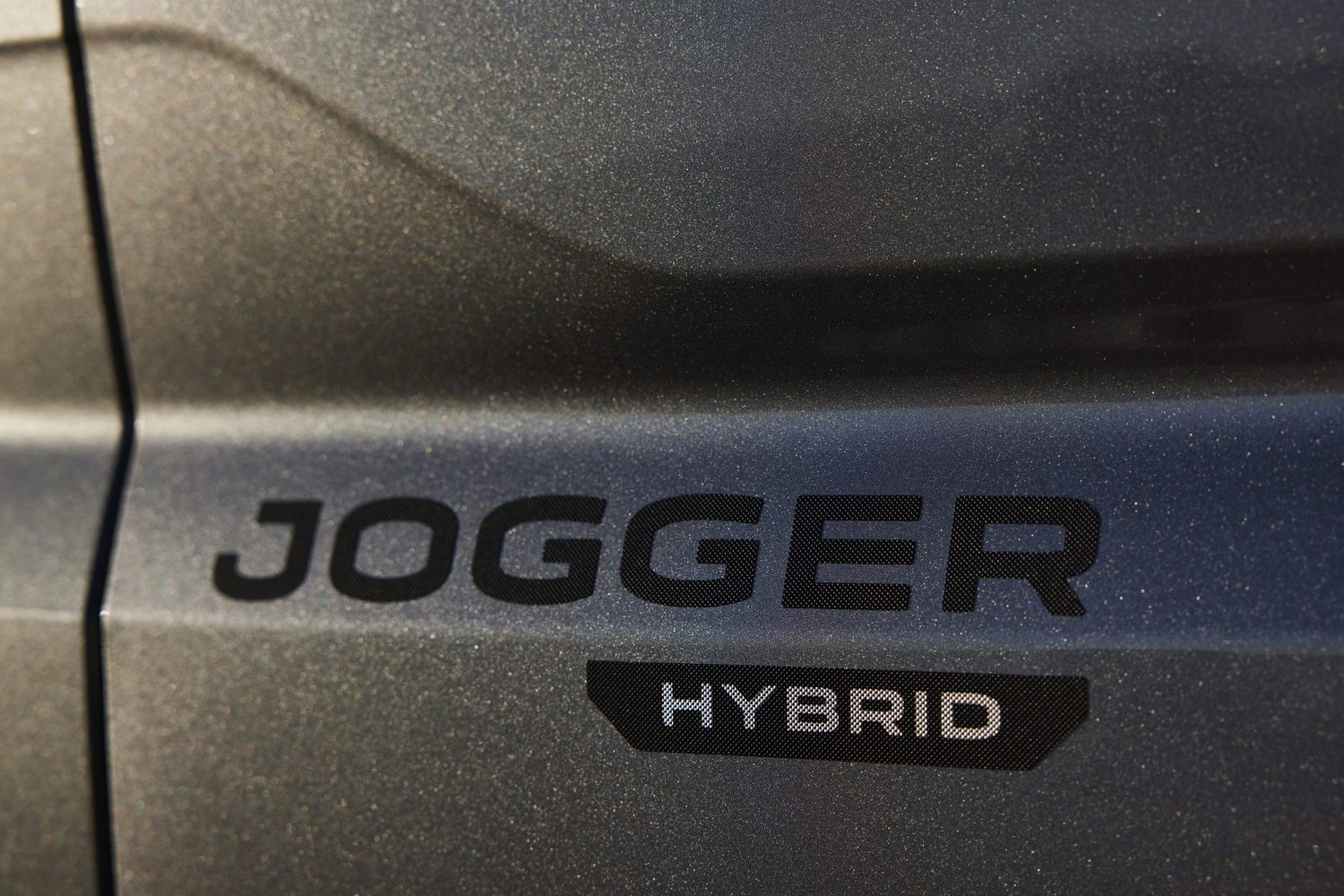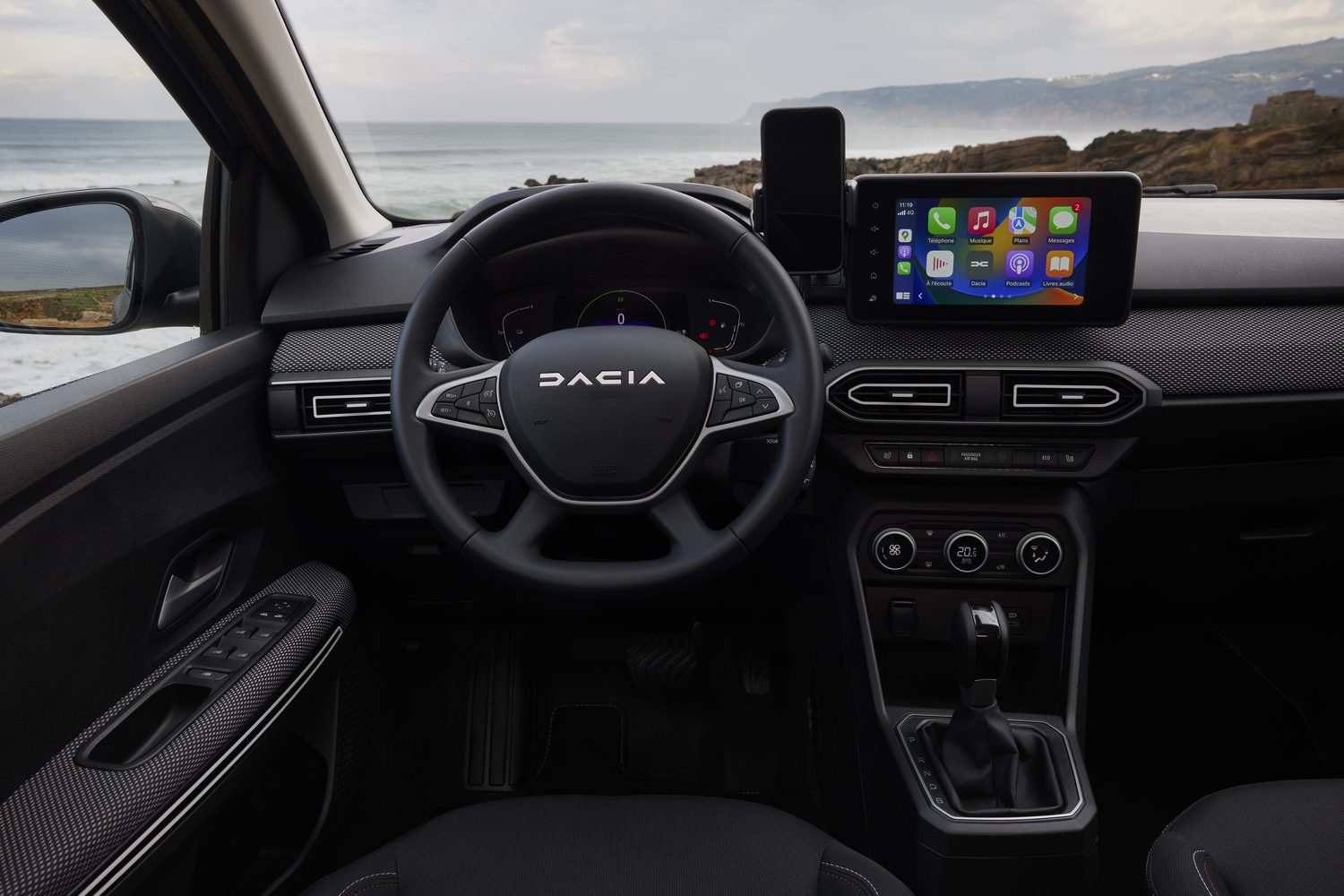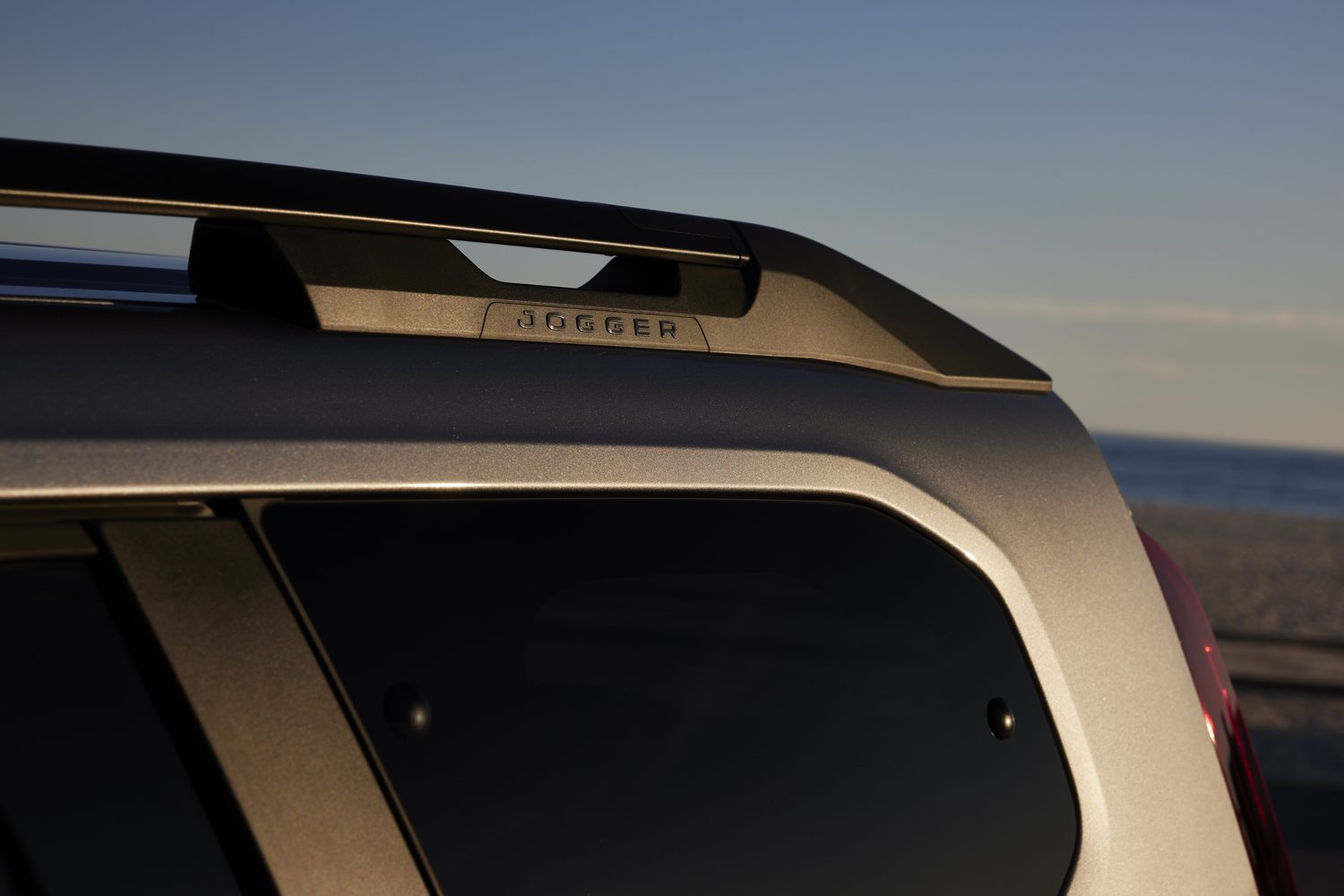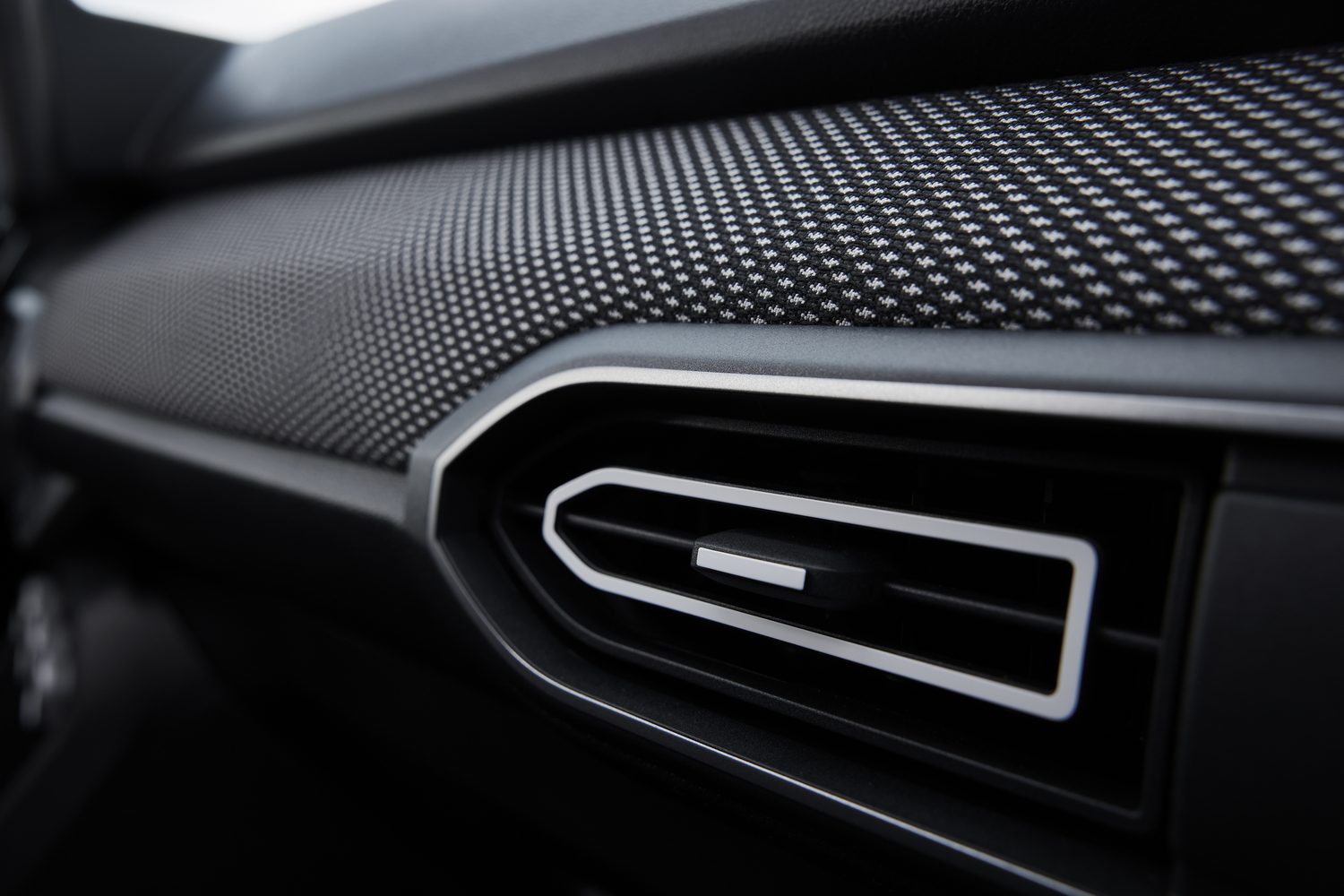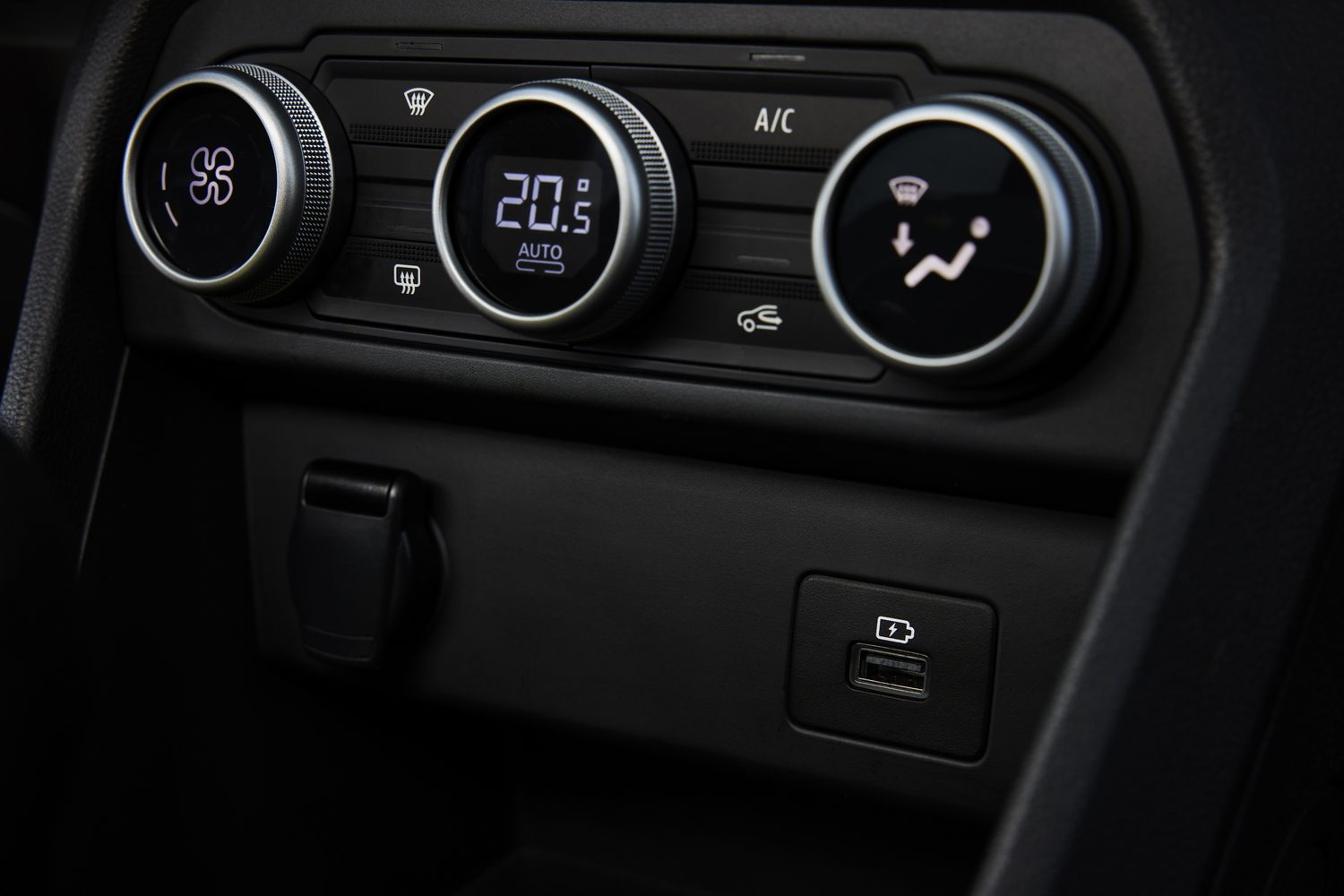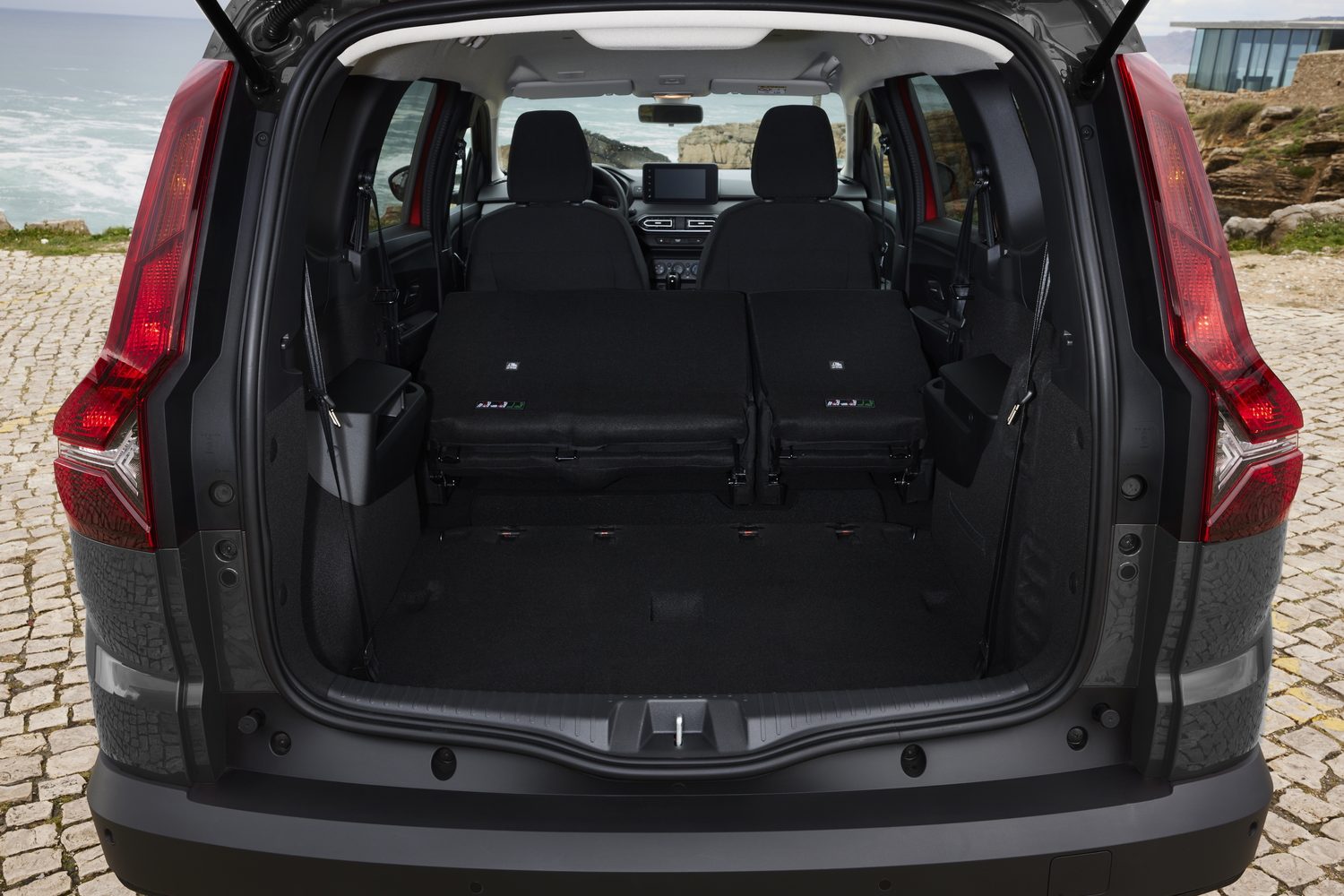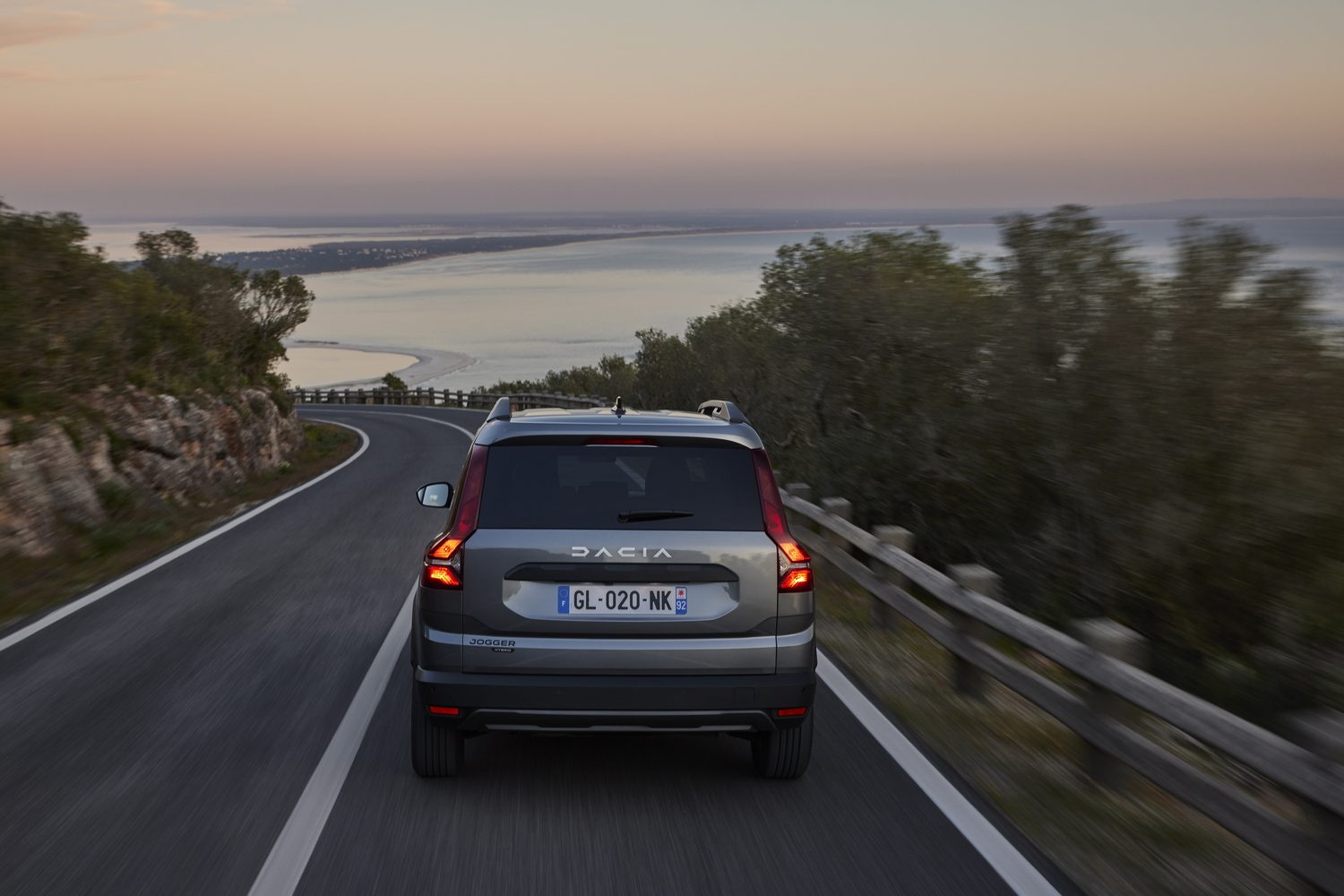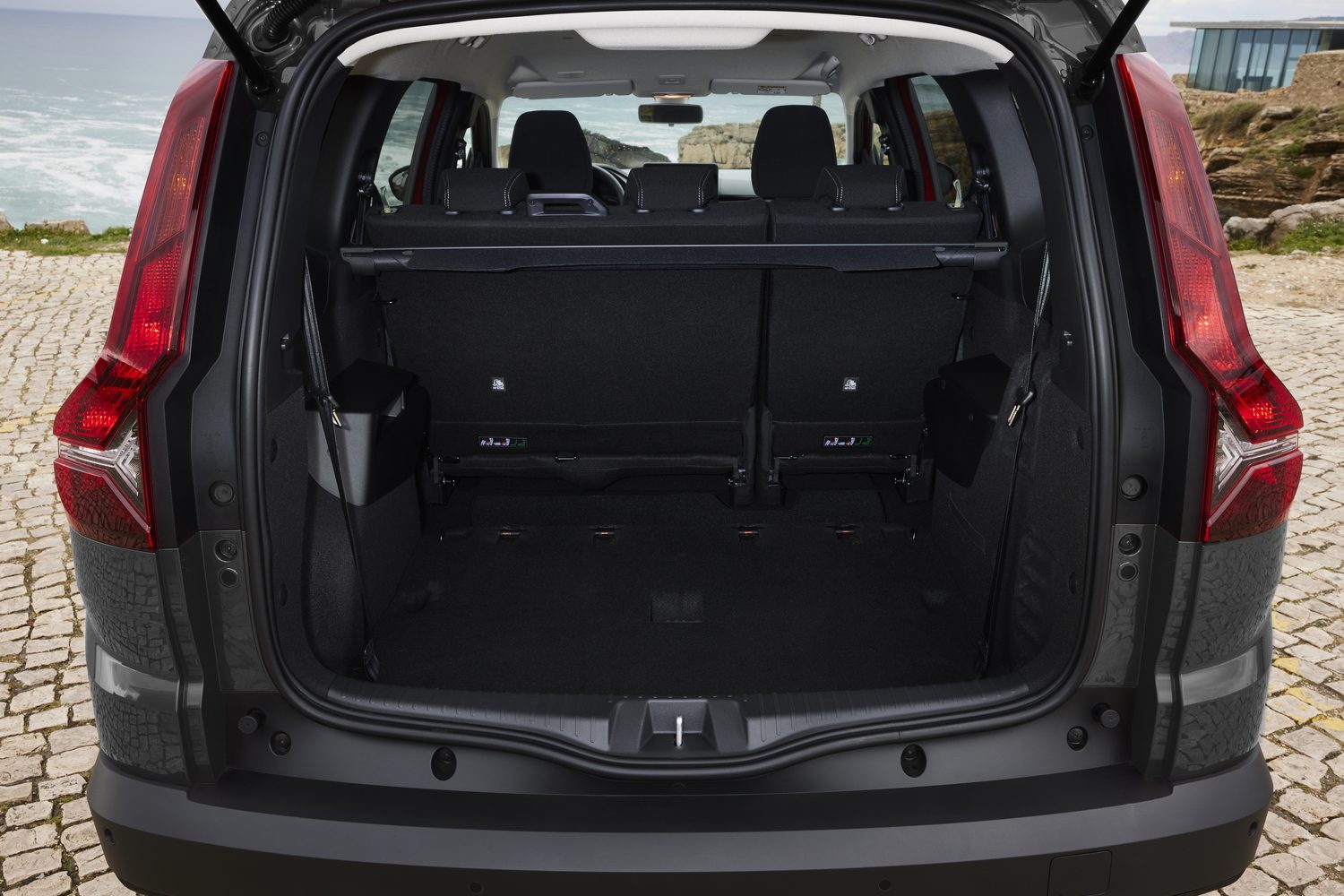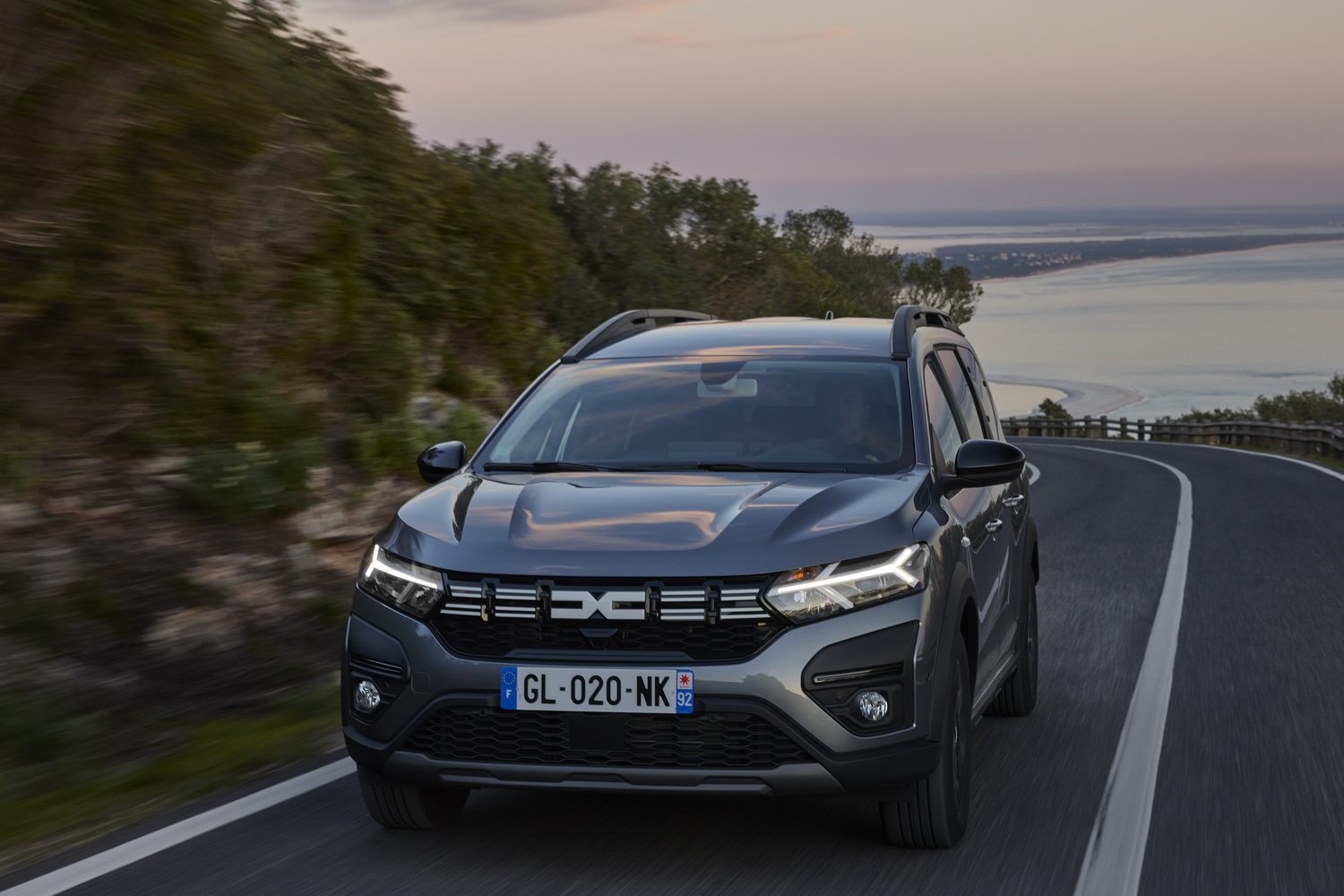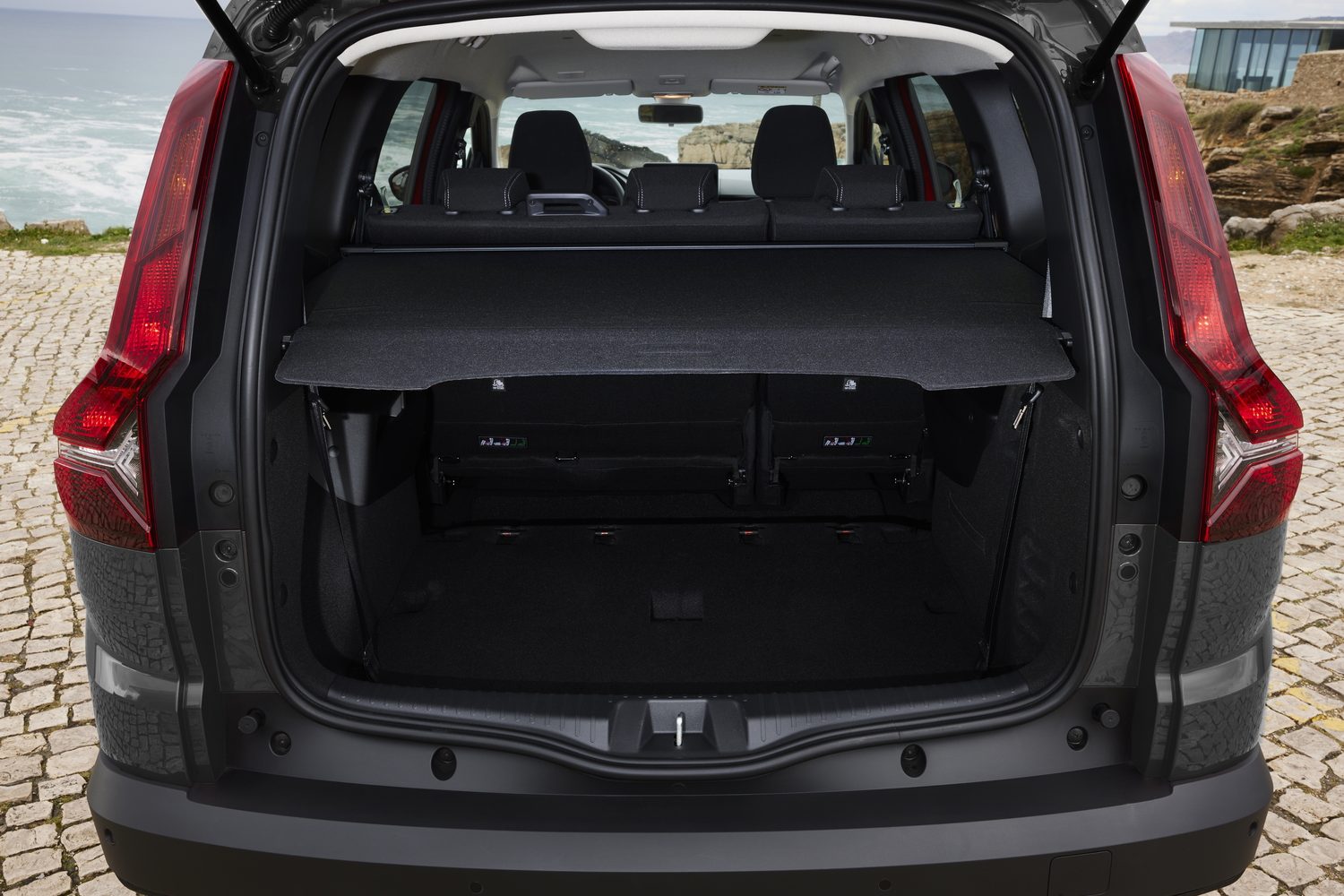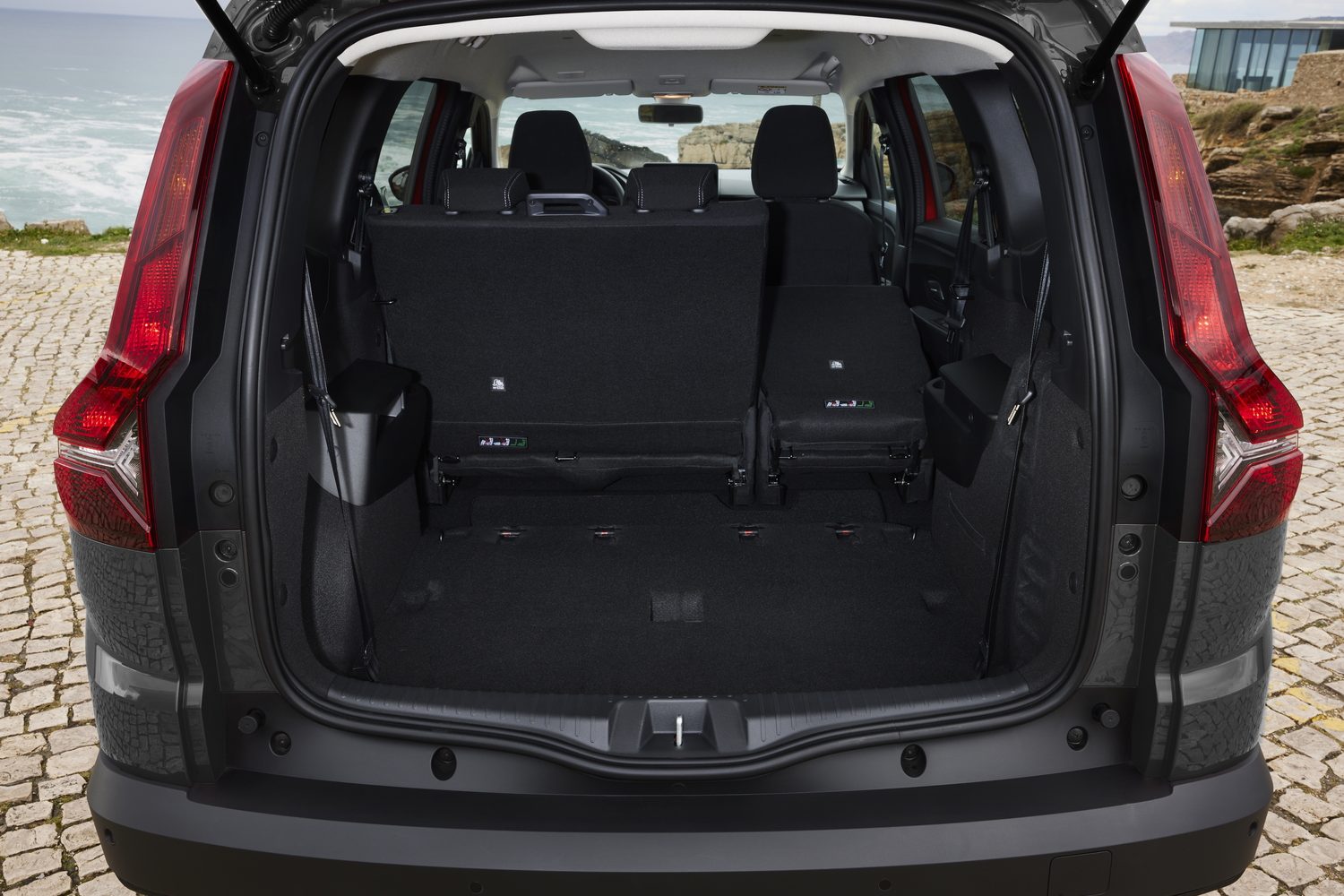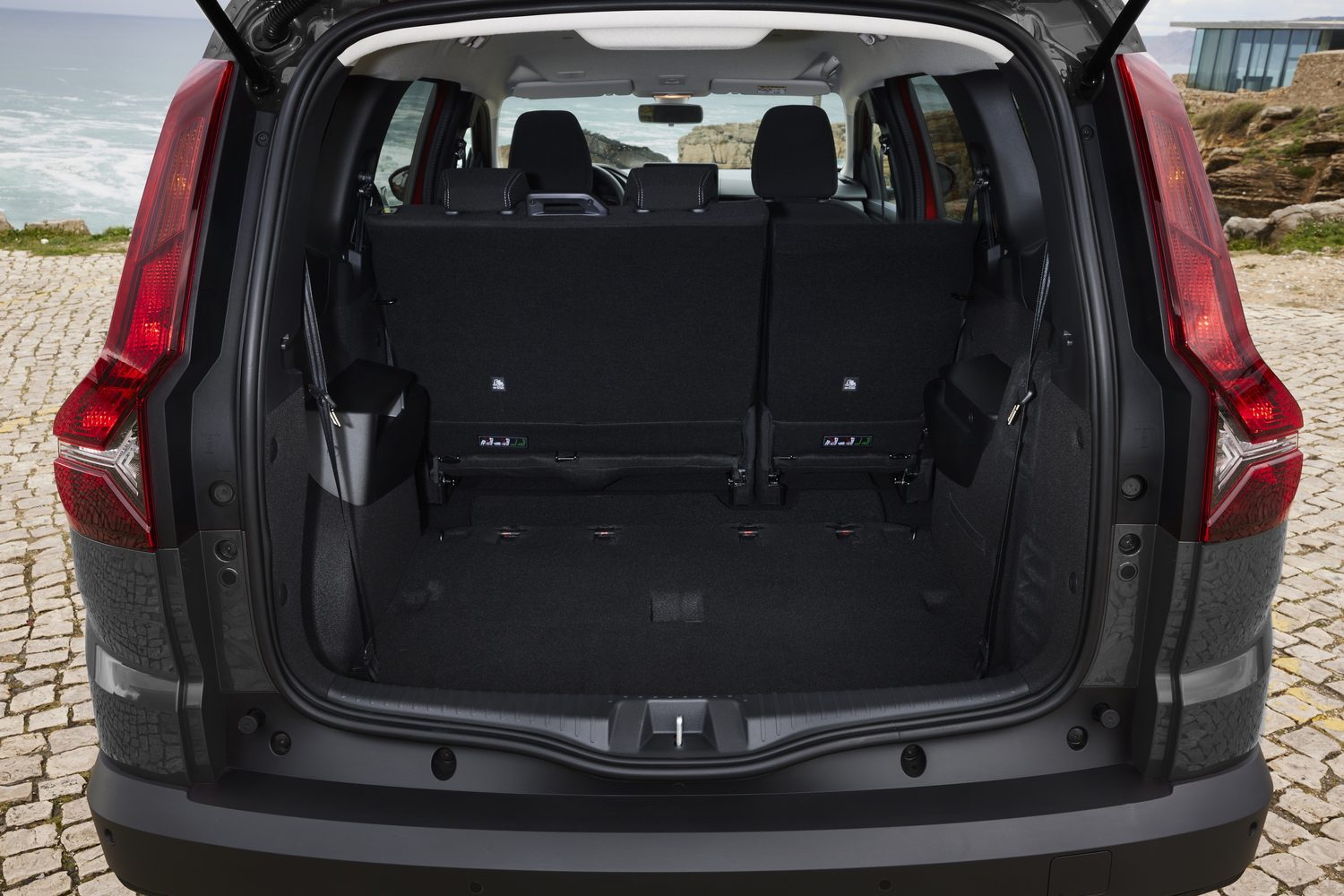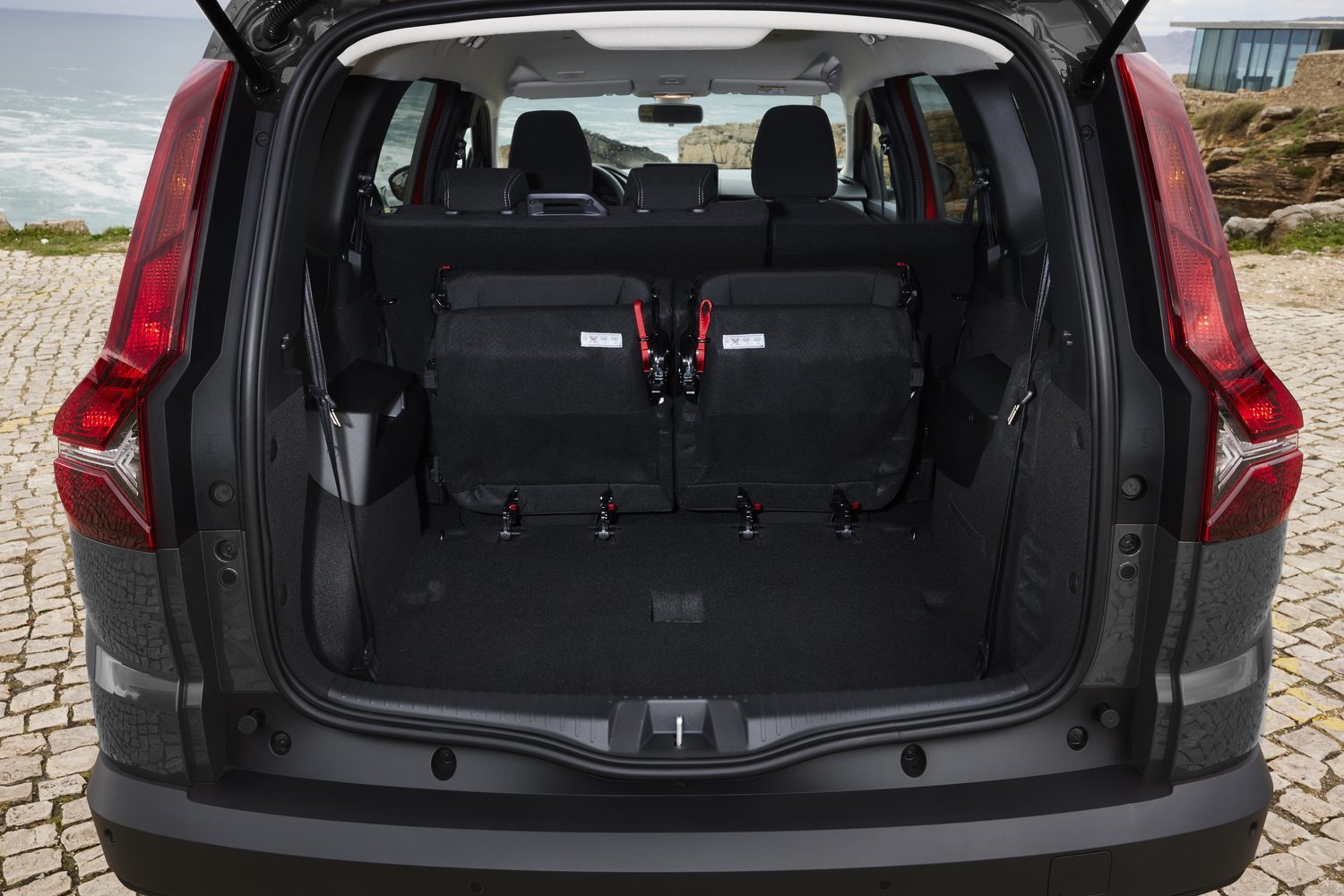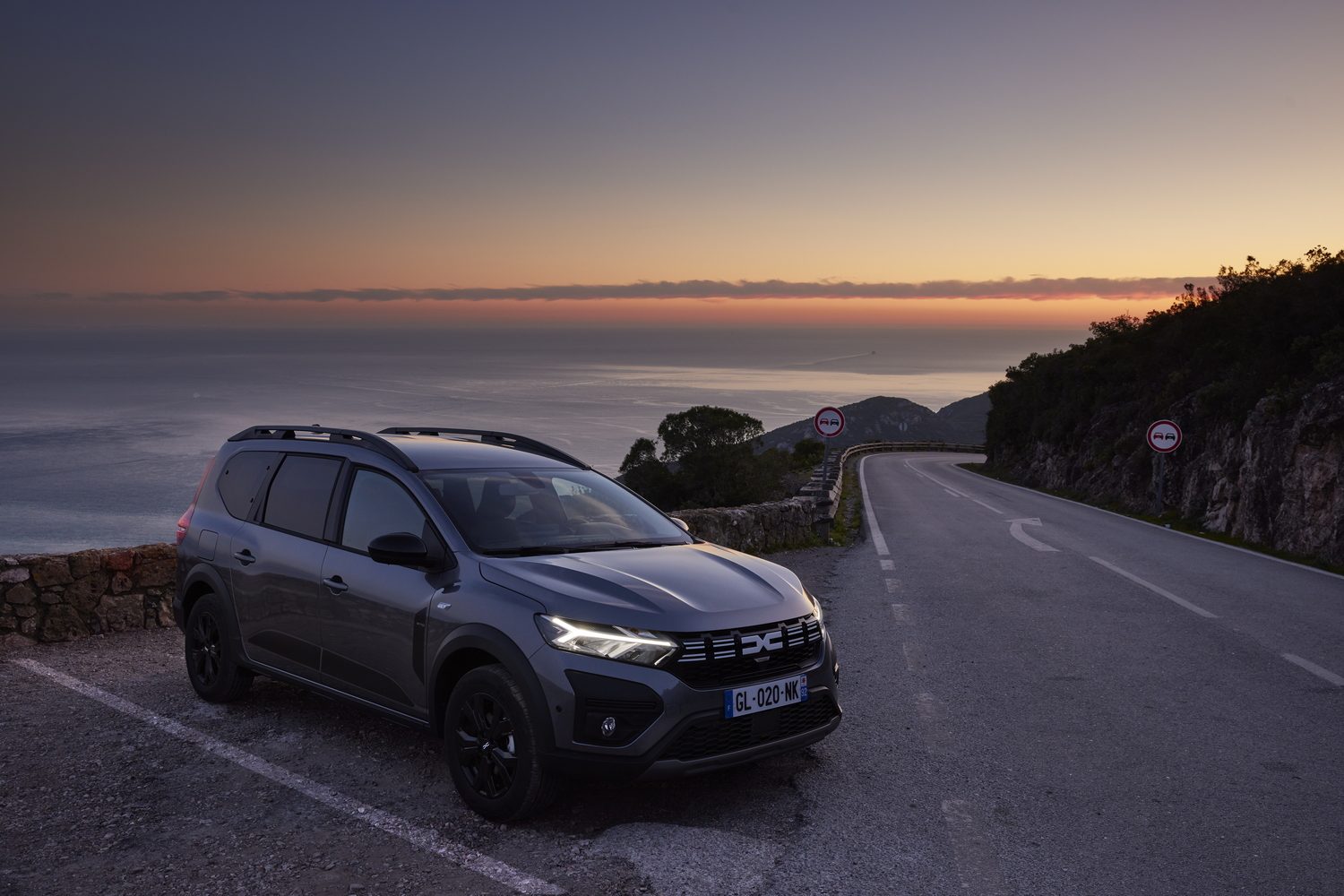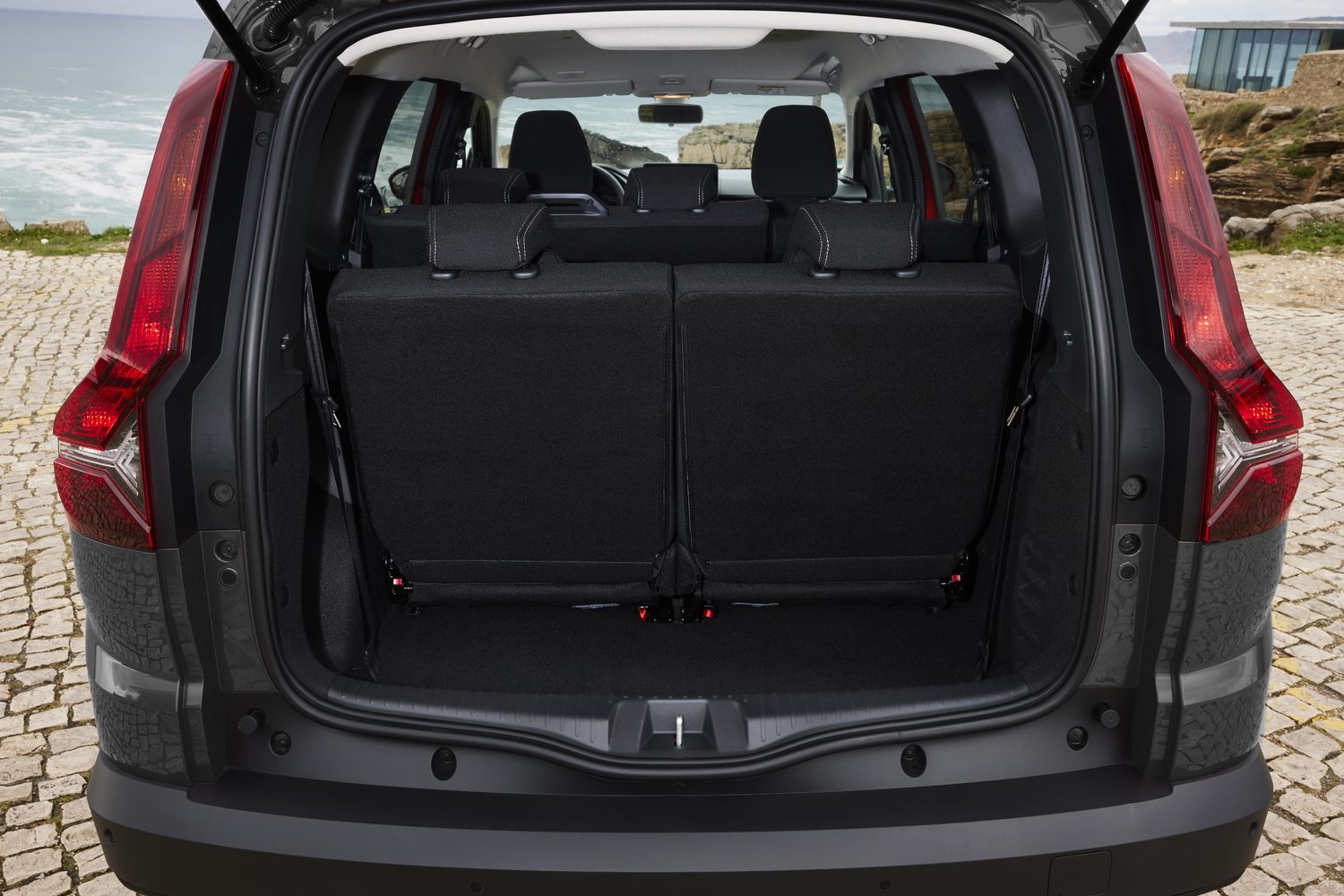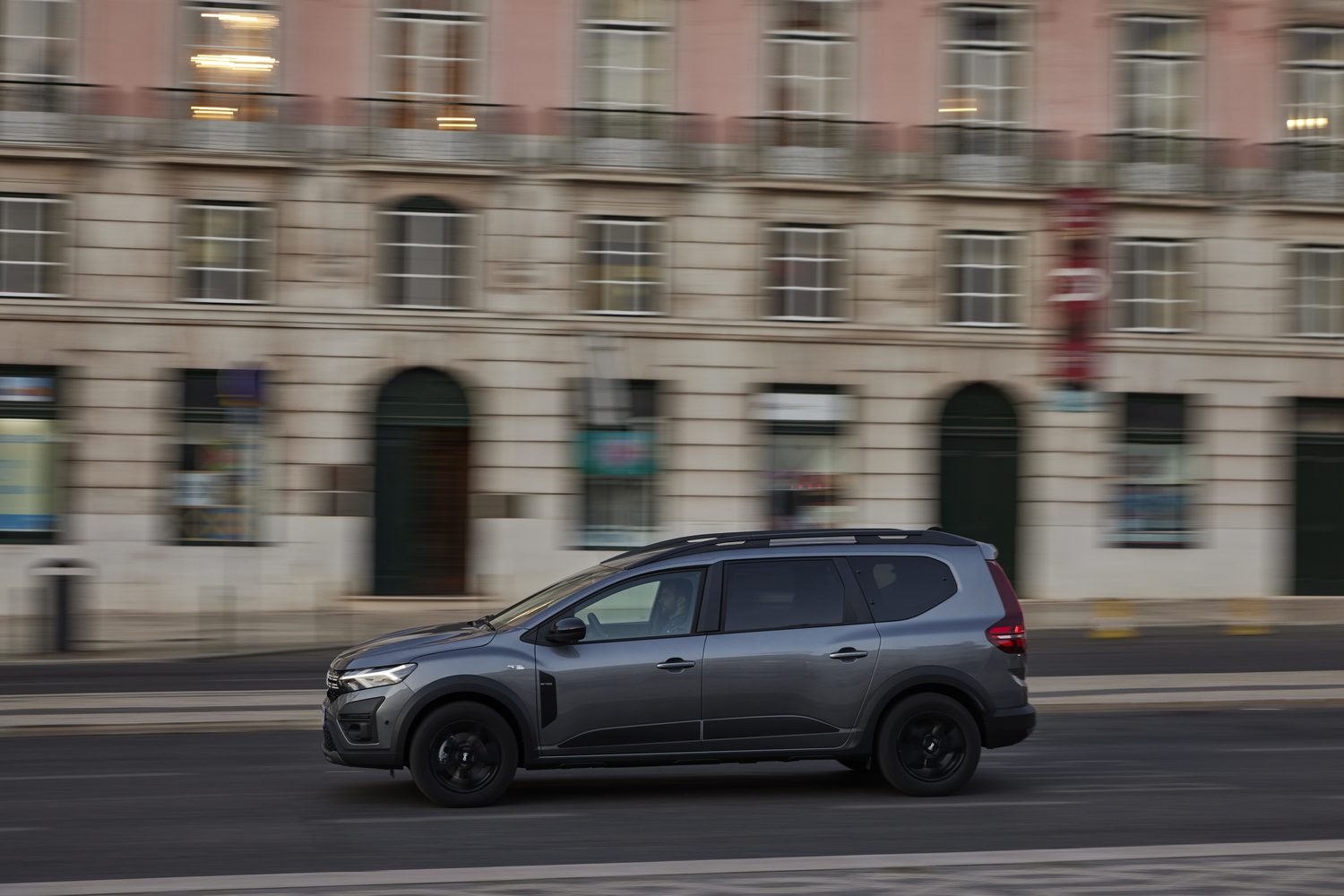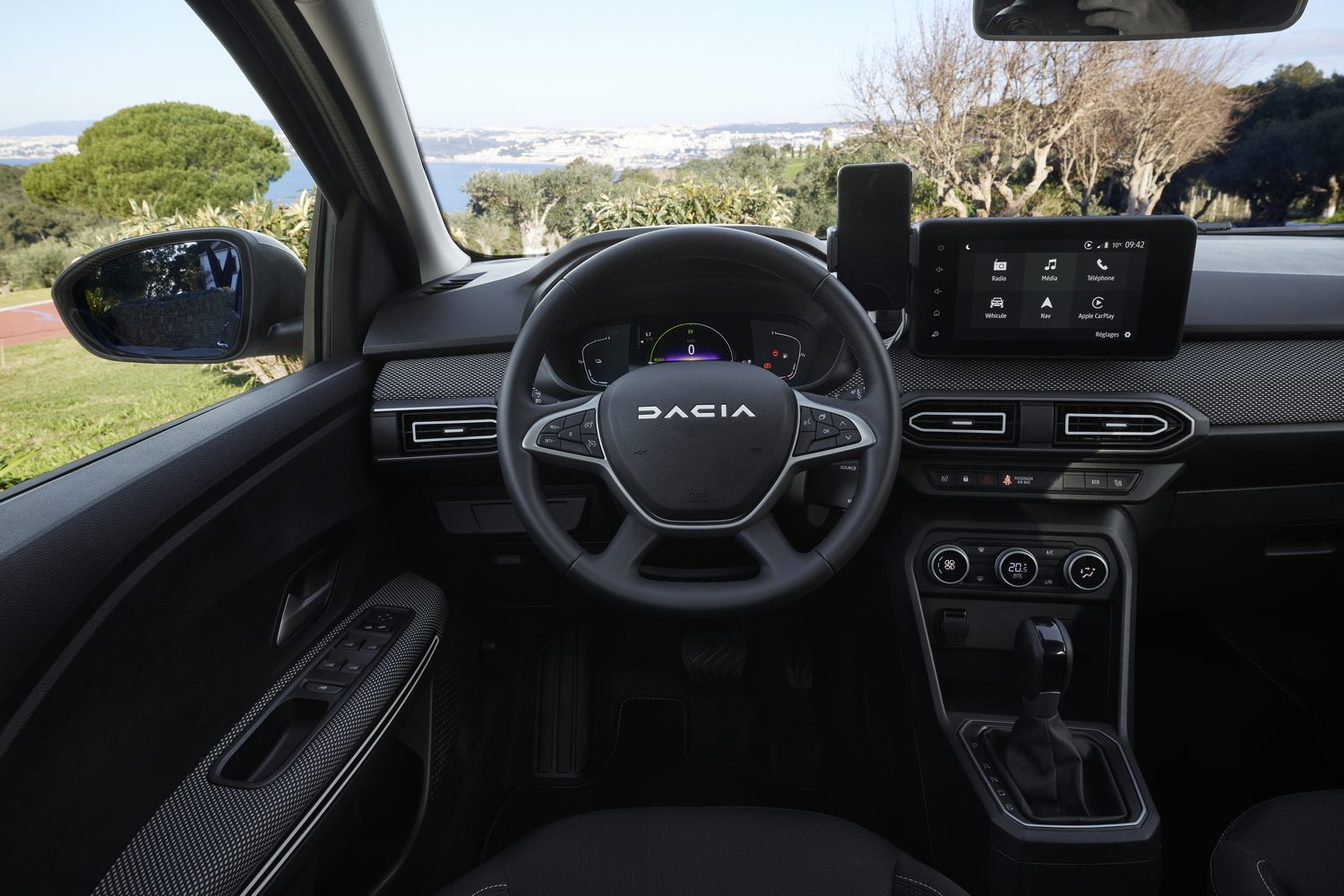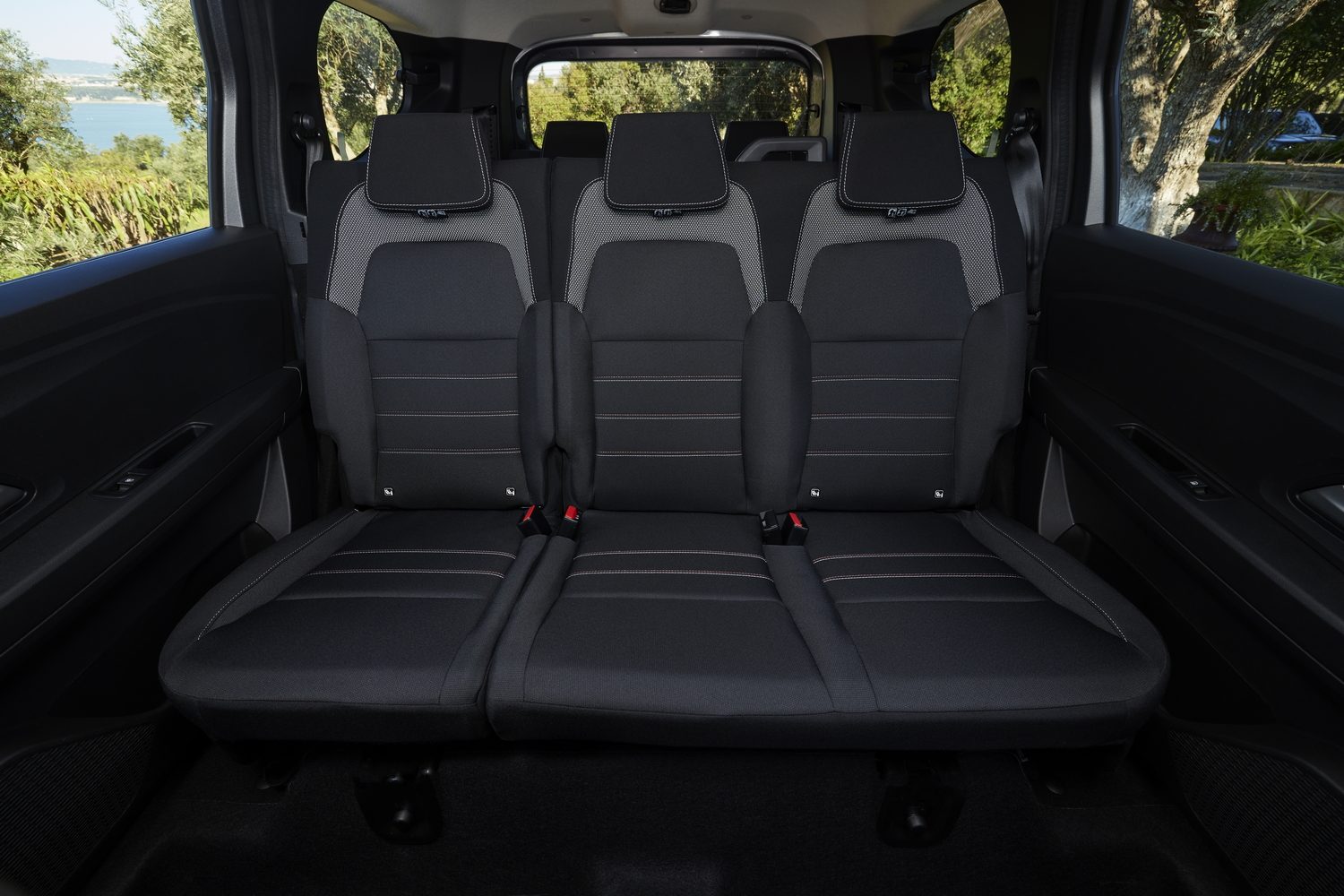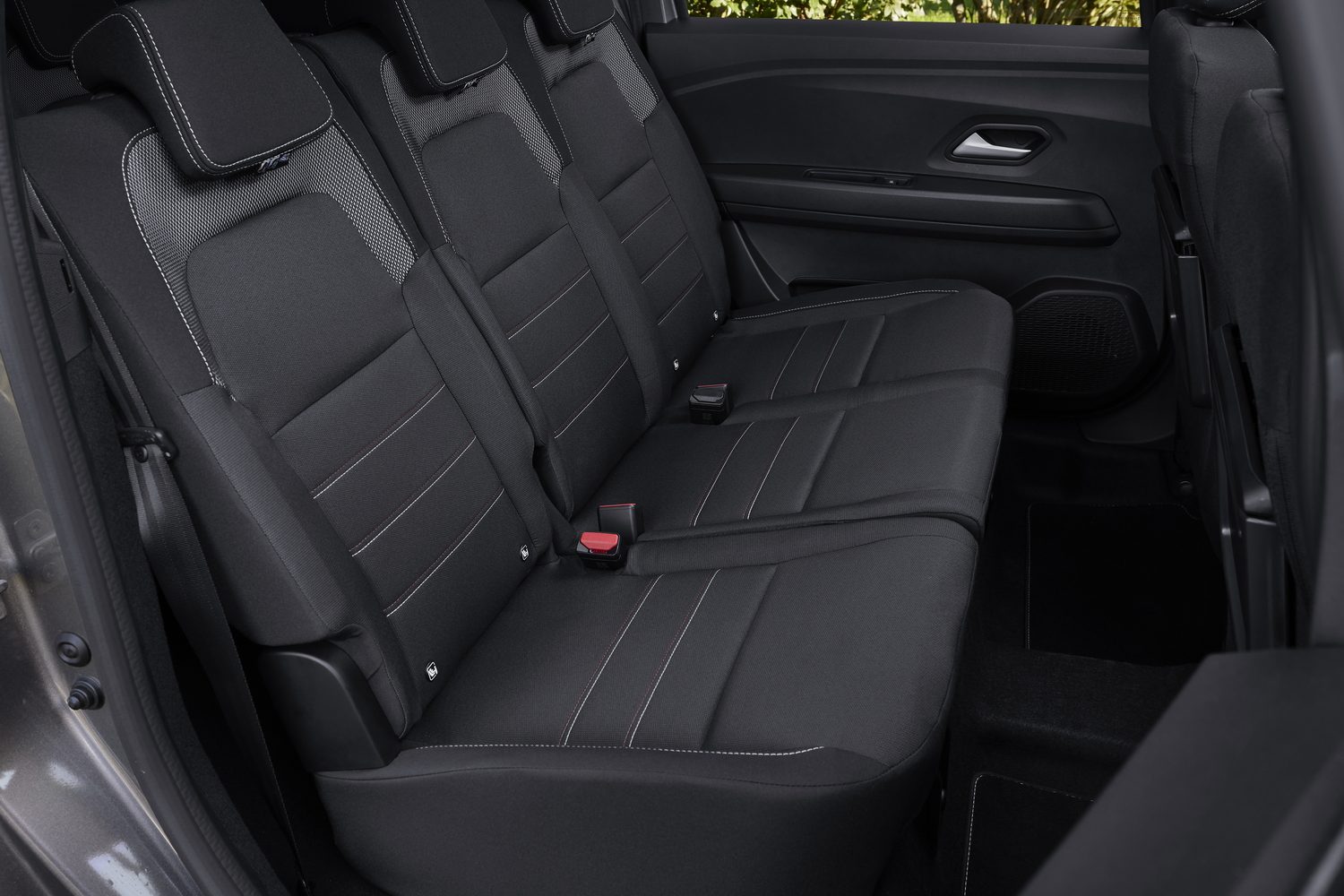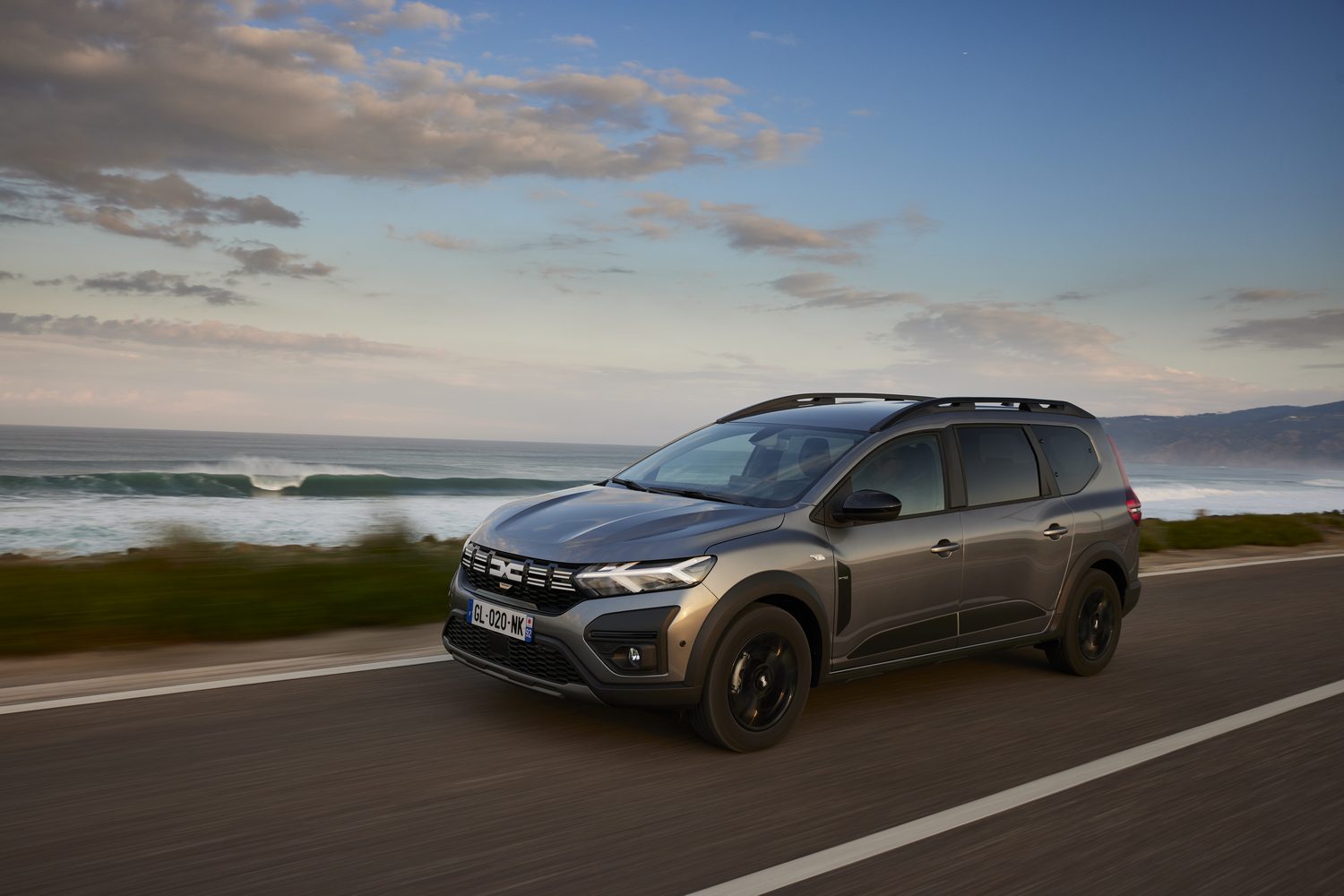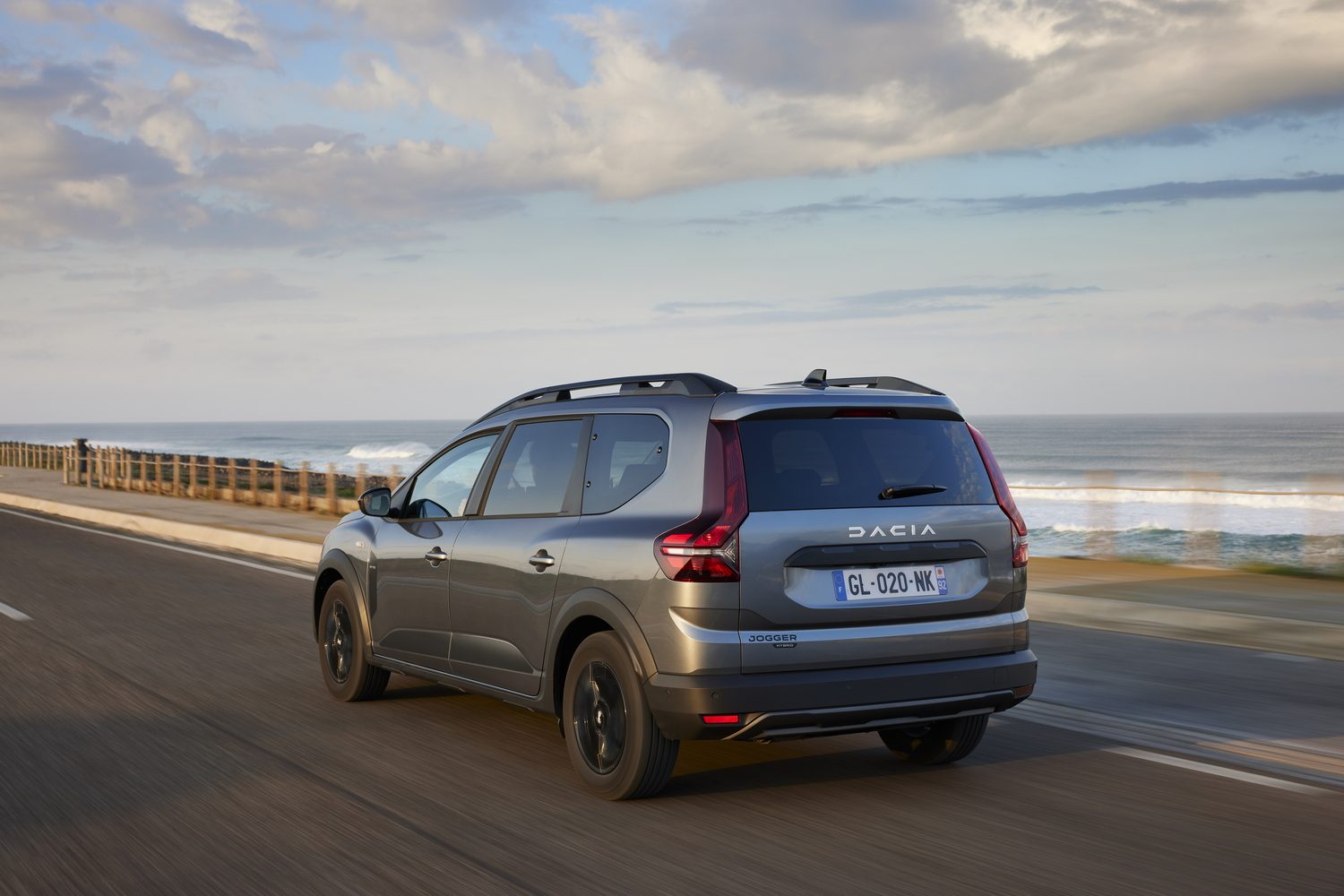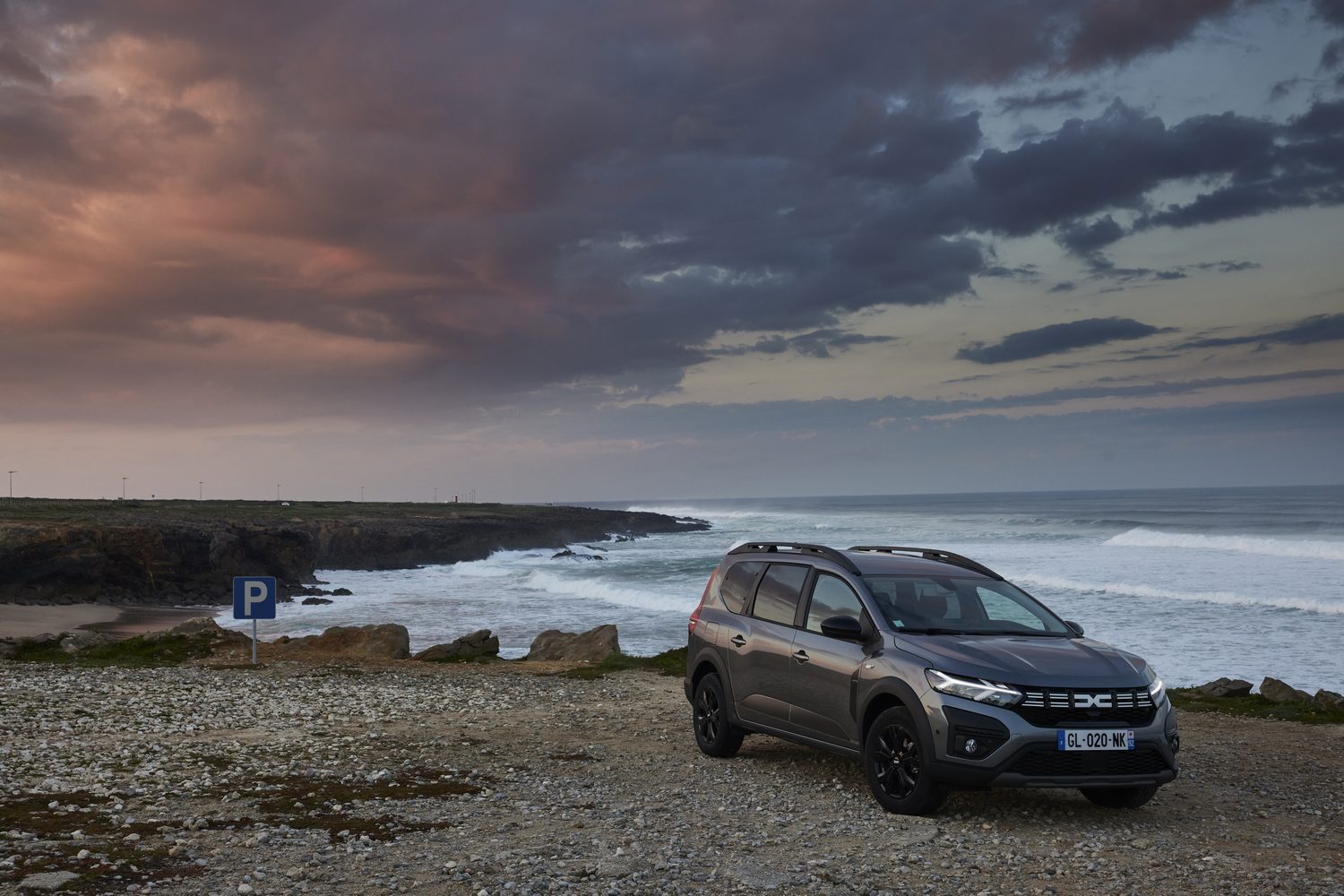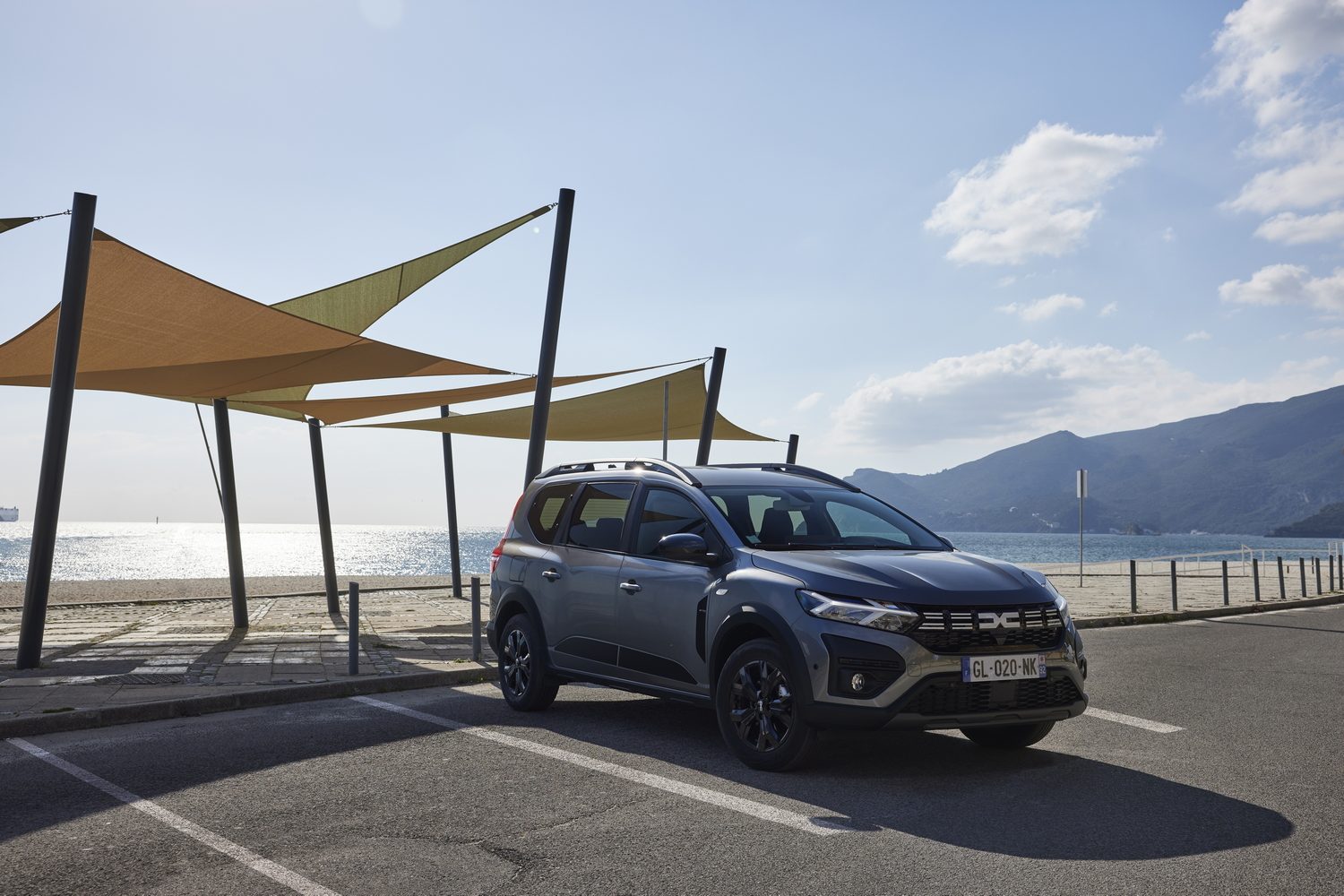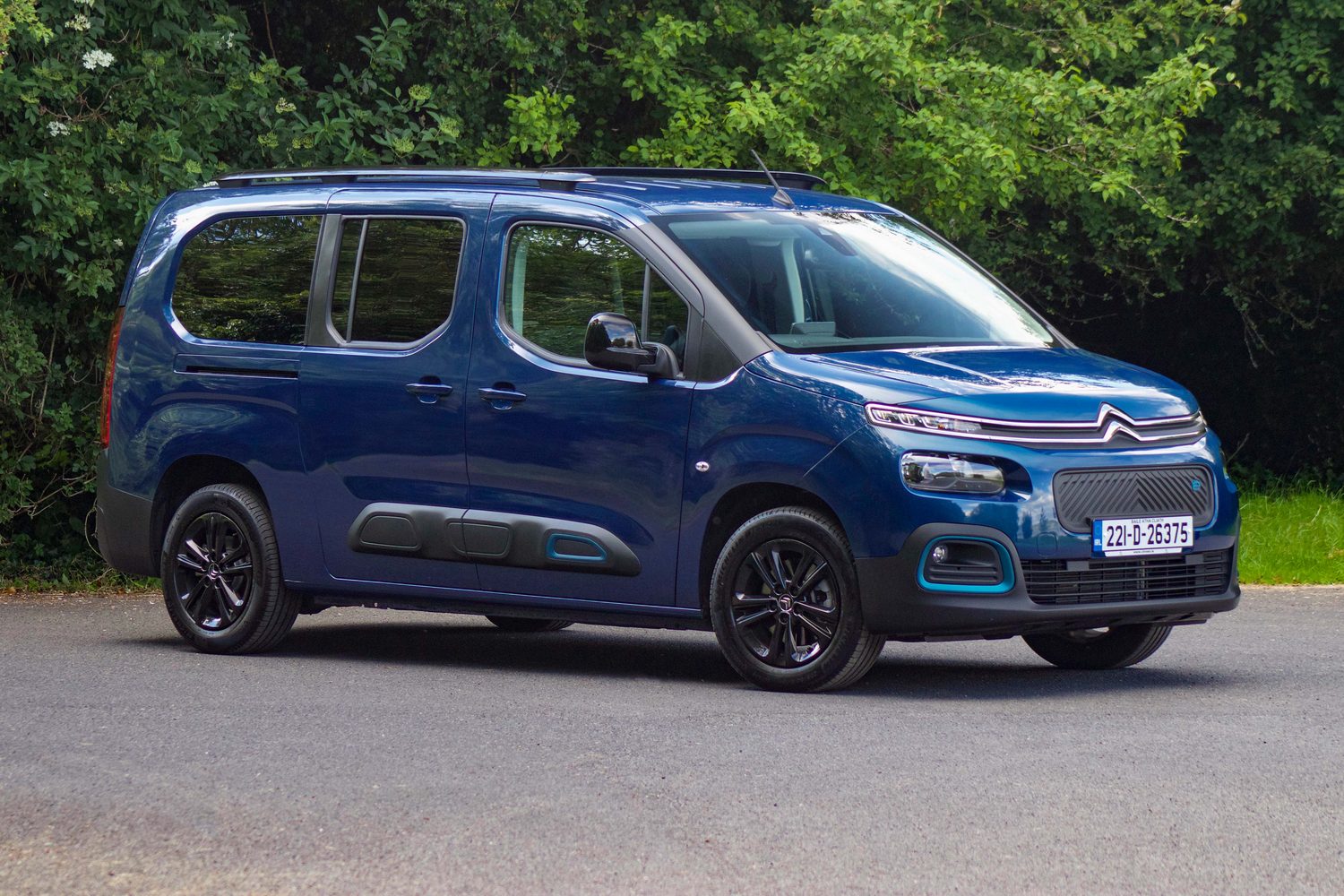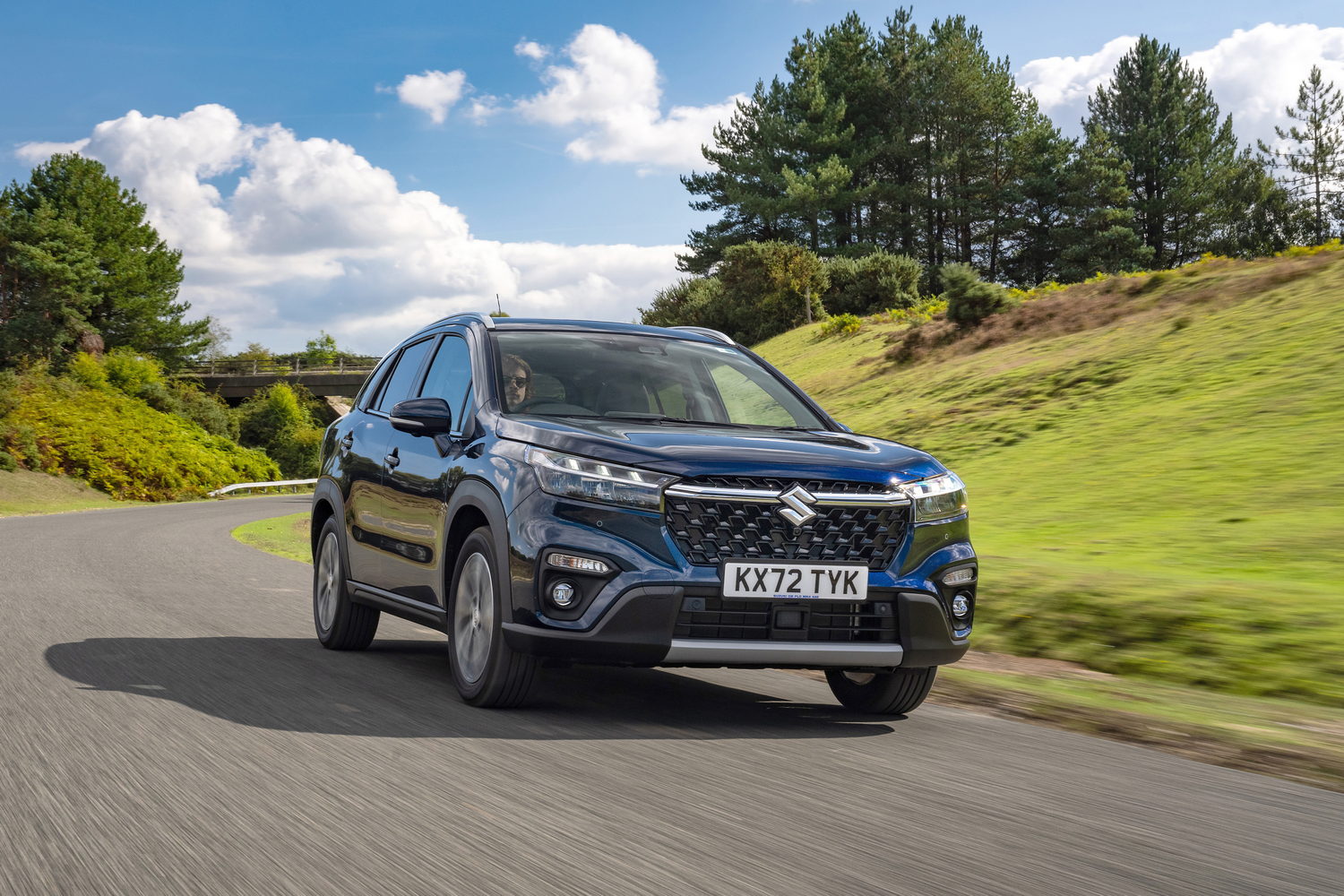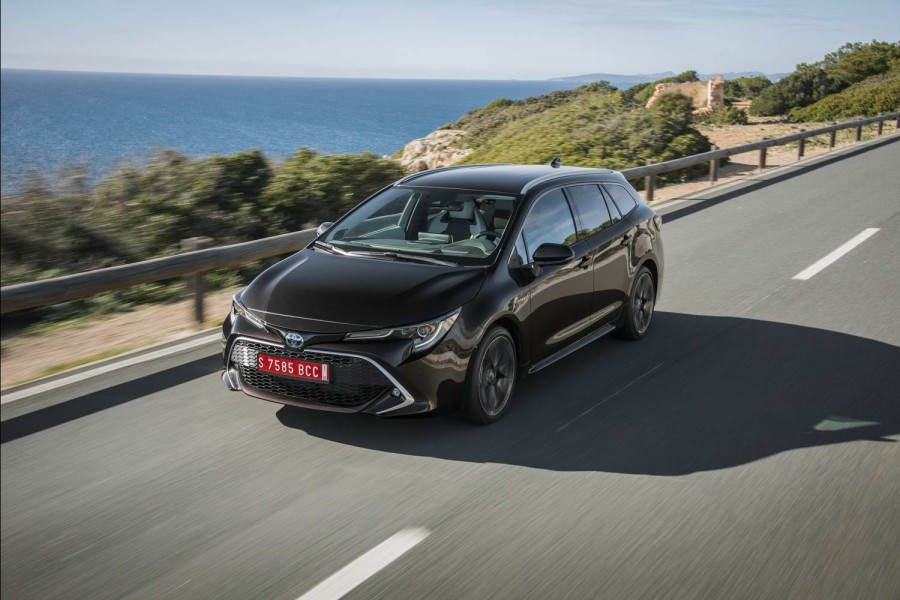Already proving a hit with value-conscious buyers, the Dacia Jogger offering has been expanded by the introduction of a hybrid model. Drawing on technology and expertise from parent company Renault, the Jogger Hybrid offers improved fuel economy and an automatic transmission without any impact on its spacious seven-seat cabin.
In the metal
In a market increasingly dominated by crossovers and compact SUVs, the Dacia Jogger stands out. While it is ostensibly an estate car, it rides a bit higher than is the norm and has cladding on its exterior to give it a more rugged appearance. It also now carries the brand's revamped identity, with a more distinctive logo across the grille.
There is a lot going on with its exterior design, but it all comes together quite well and should certainly appeal to those who view a car as more than mere transport for getting from A to B. The Jogger has the style of a car that comes ready for adventure, even though it firmly sticks to a front-wheel-drive layout.
Dacia is a company that likes to keep things simple, but the Jogger does have some clever features. Take the roof rails, for example; they can be unlocked and swivelled 90 degrees to form the cross bars for a roof box or bike rack to lock onto.
Interior space is decent too, and even if you have all seven seats in place, there is still 212 litres of luggage space. With the rearmost seats folded, the boot capacity grows to 699 litres. Removing the third row entirely is simple, leaving you a massive 820 litres of space. As the Jogger was designed from the outset to be a hybrid, there is no impact on boot capacity for this model, which is a big plus compared to some plug-in hybrid SUVs that often have less boot space than a C-segment hatchback.
You can specify the Dacia with a rather spartan interior that's free from frills, but the Jogger Hybrid does gain some extra equipment as standard. These include a seven-inch digital instrument display that shows various hybrid-related information, including the battery charge level and fuel gauge, which will show little change if you drive with prudence.
You get a reasonable amount of adjustment for the driver's seating position. Our test car was equipped with a colour touchscreen, which supports Android Auto and Apple CarPlay, alongside a cradle for holding your phone. There's a convenient USB-A charging port right behind it too. Being a hybrid model means it's fitted with an automatic transmission. Dacia also specifies an electronic parking brake as standard, leaving room for an armrest with additional storage underneath.
Space in the rear is one of the main reasons to consider the Jogger Hybrid, and the middle row of rear seats features a fold and lift system that enables easy access for those getting into the third row. Those rearmost seats can accommodate an adult of average height - not something many so-called seven-seat SUVs can do - and large windows mean it doesn't feel claustrophobic in there either.
Driving it
The Dacia Jogger Hybrid uses a 1.6-litre petrol engine working in concert with two electric motors, one of which acts as a high-voltage starter generator. Energy for the electric motor comes from a small 1.2kWh battery at the rear of the car underneath the third-row seats, where you would typically expect to find a spare wheel (Dacia provides the Jogger Hybrid with a tyre inflation kit as standard). It differs from other hybrids through the use of a sophisticated multi-mode gearbox that uses no clutches, which Dacia claims can optimise gear changes and make them smoother.
The battery has sufficient power to enable the Jogger Hybrid to pull away at the start of a journey using only the electric motor. As it does so at lower speeds, it emits a sound through an external speaker to alert pedestrians of its presence. It moves quietly and smoothly, and before long the combustion engine will turn into action. You are aware of it being active, and at times it will seem to rev at higher speeds than the car's speed would suggest, as it directs energy into charging the battery. This process happens automatically, so the driver is never required to do anything special or specific; the car handles everything.
You'll get the most benefit from the hybrid system if you're predominantly driving in town or a city where your average speed doesn't get too high and there's a lot of stopping and starting. In these scenarios, the petrol engine can spend more time inactive, letting the battery and electric motor take over propulsion. With steady inputs the Jogger Hybrid remains smooth even when the engine sparks into life.
As you get out onto more open roads there is more interplay between the elements of the hybrid system and the four-cylinder engine does a reasonable job of taking up the slack. However, there are occasions when it can begin to sound strained and become a touch breathless, namely on steeper climbs. More positively, the Hybrid 140 doesn't demonstrate the transmission elasticity that some other hybrids with CVTs (continuously variable transmissions) can suffer from, so there's better responsiveness to acceleration inputs.
The combination of a slightly raised ride height and wheels that are modestly sized means there is a reasonable level of comfort from the Jogger Hybrid's suspension. In most typical scenarios, it provides a smooth ride, though it can be a touch noisy inside the cabin at higher speeds.
More importantly, the Dacia does seem to perform well on the fuel economy front. Our time with the car saw us take in a variety of roads, from countryside to city traffic and motorways. Over almost 300 kilometres, the car consumed 4.8 litres/100km, which matches the official WLTP consumption figure. It's worth noting that there were only two people in our car during our time with it, and consumption would likely increase if you have all the remaining seats occupied and perhaps some luggage onboard. Nevertheless, it's a decent result from the car, easily matching what you might expect from a diesel model on a good day.
What you get for your money
Although Irish pricing for the Dacia Jogger Hybrid won't be confirmed until closer to the car's arrival in the second half of 2023, we expect it to be the most expensive version on sale. Currently, the most costly Jogger is the Extreme TCe 110, which will set you back €28,440. Dacia Ireland may try to get the Jogger Hybrid in with a sub-€30K price. Nonetheless, the Hybrid 140 does include some additional standard equipment, will benefit from lower motor tax and bring potential fuel savings over the ownership period.
Summary
The Dacia Jogger Hybrid 140 will undoubtedly appeal to many buyers, even with its price premium over the regular petrol models. With no compromise on interior packaging and respectable real-world consumption figures, it is an ideal candidate for a family car that is cheaper to buy and run than most SUVs.

